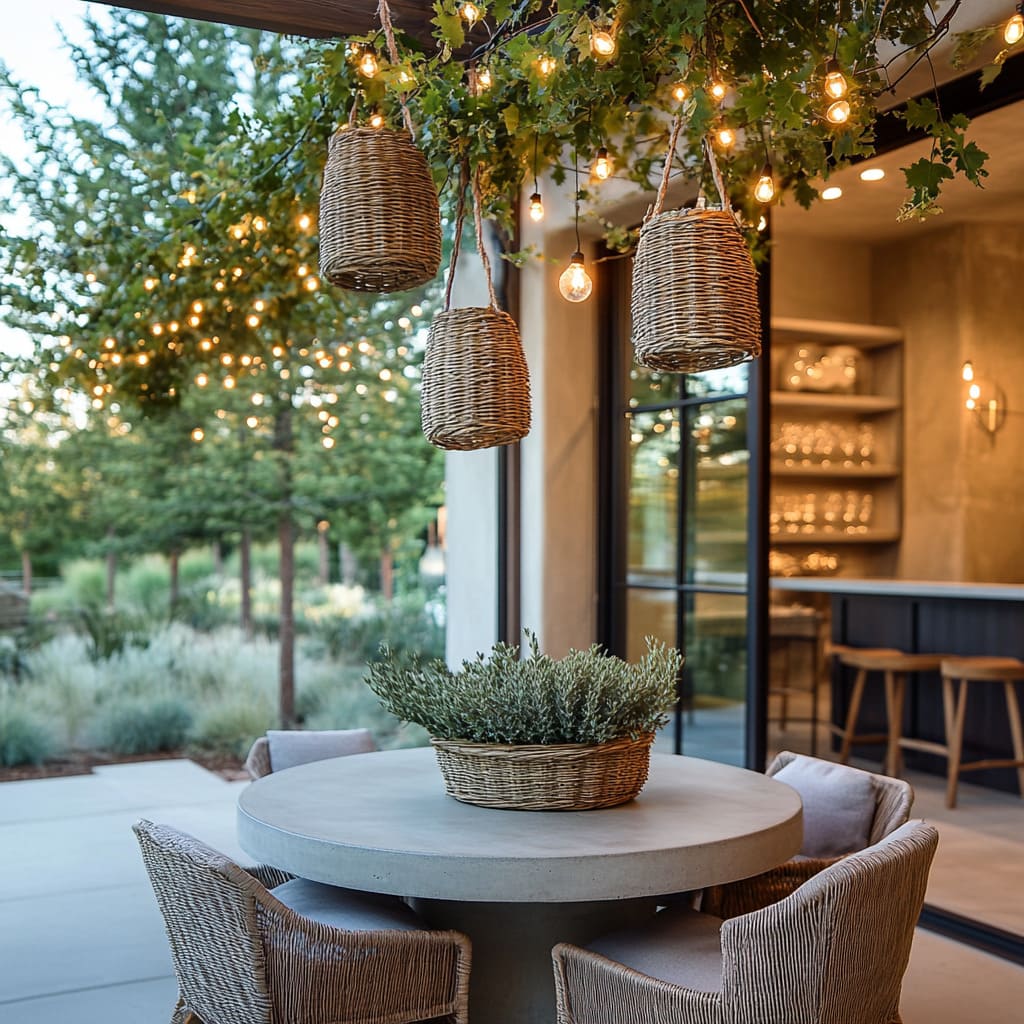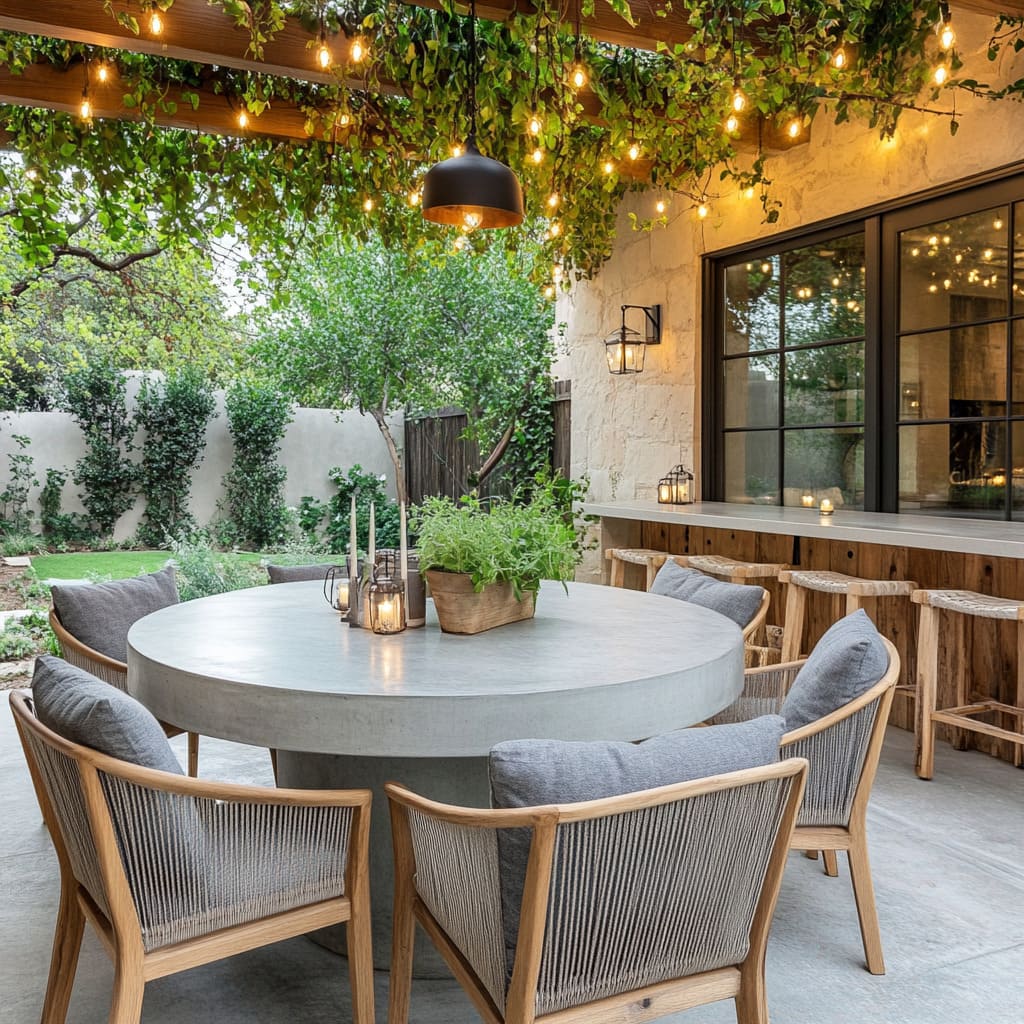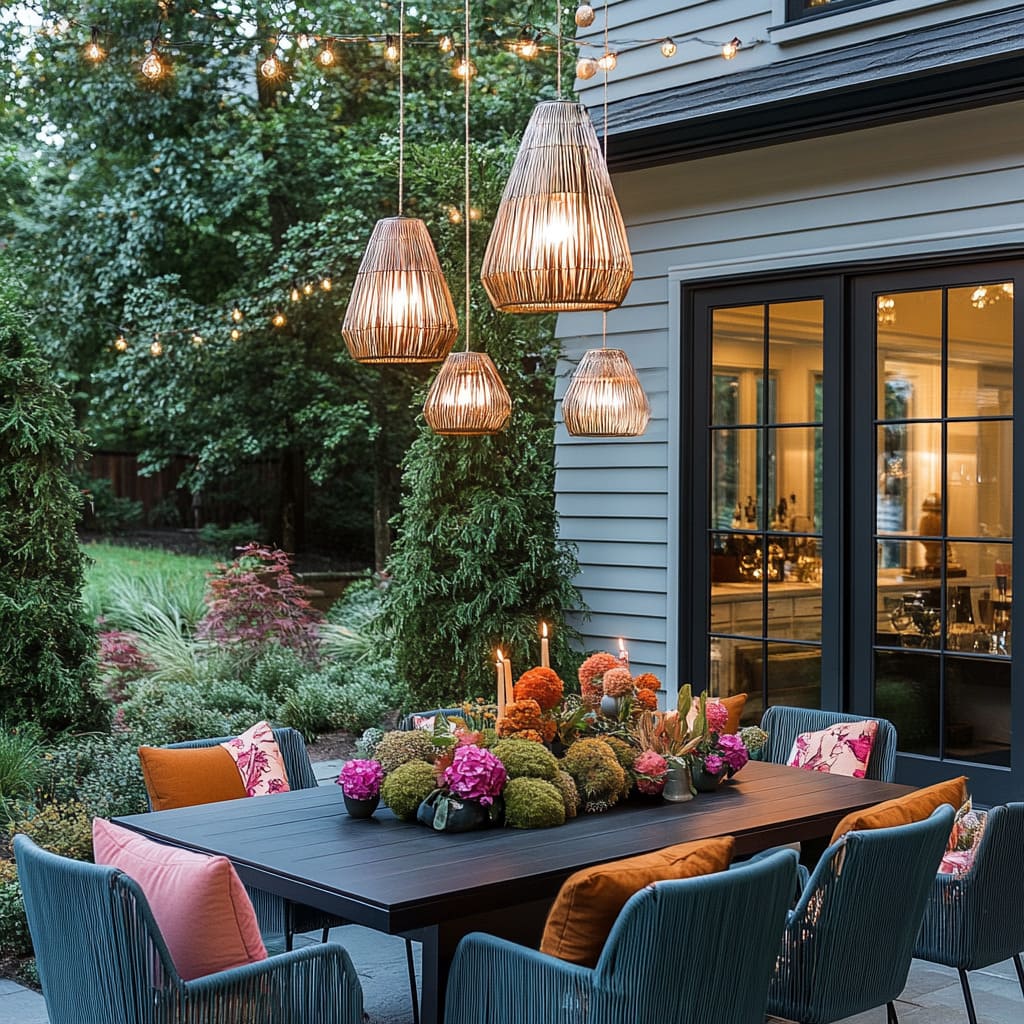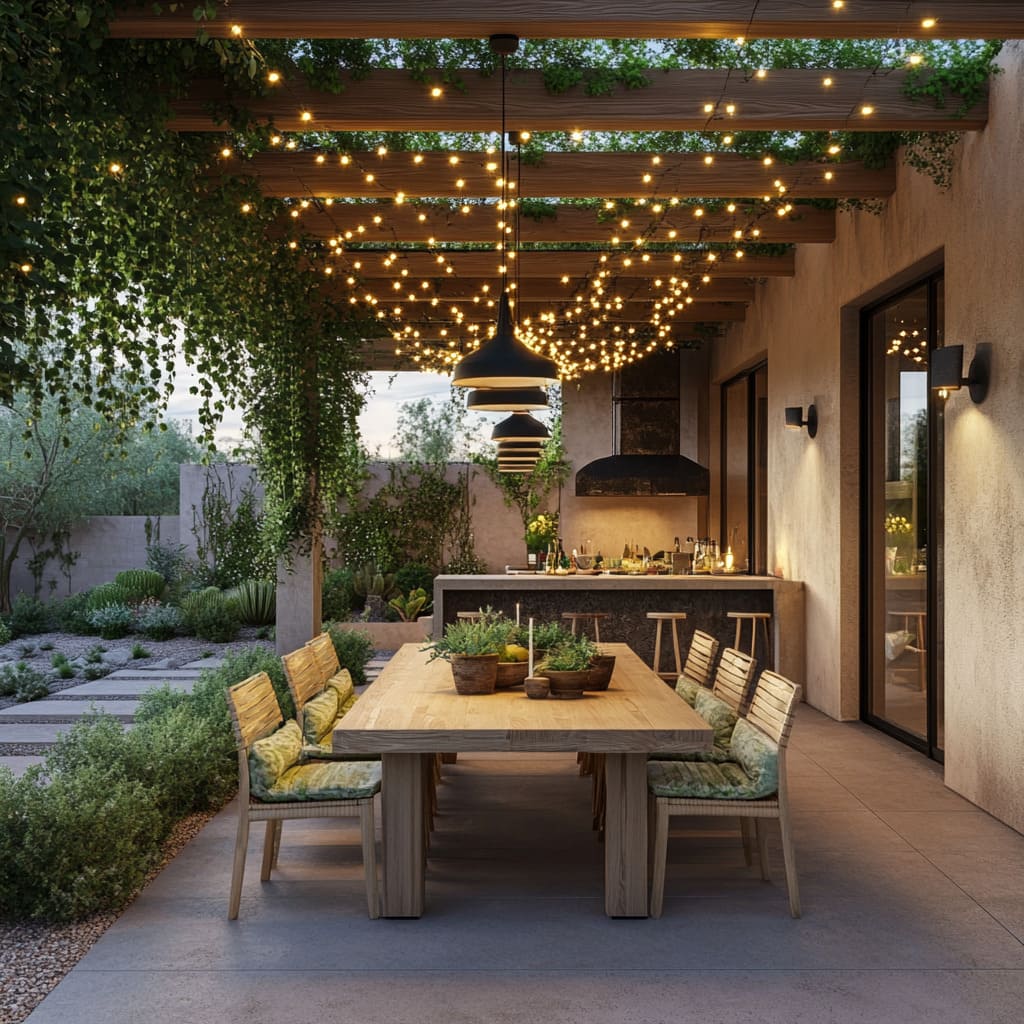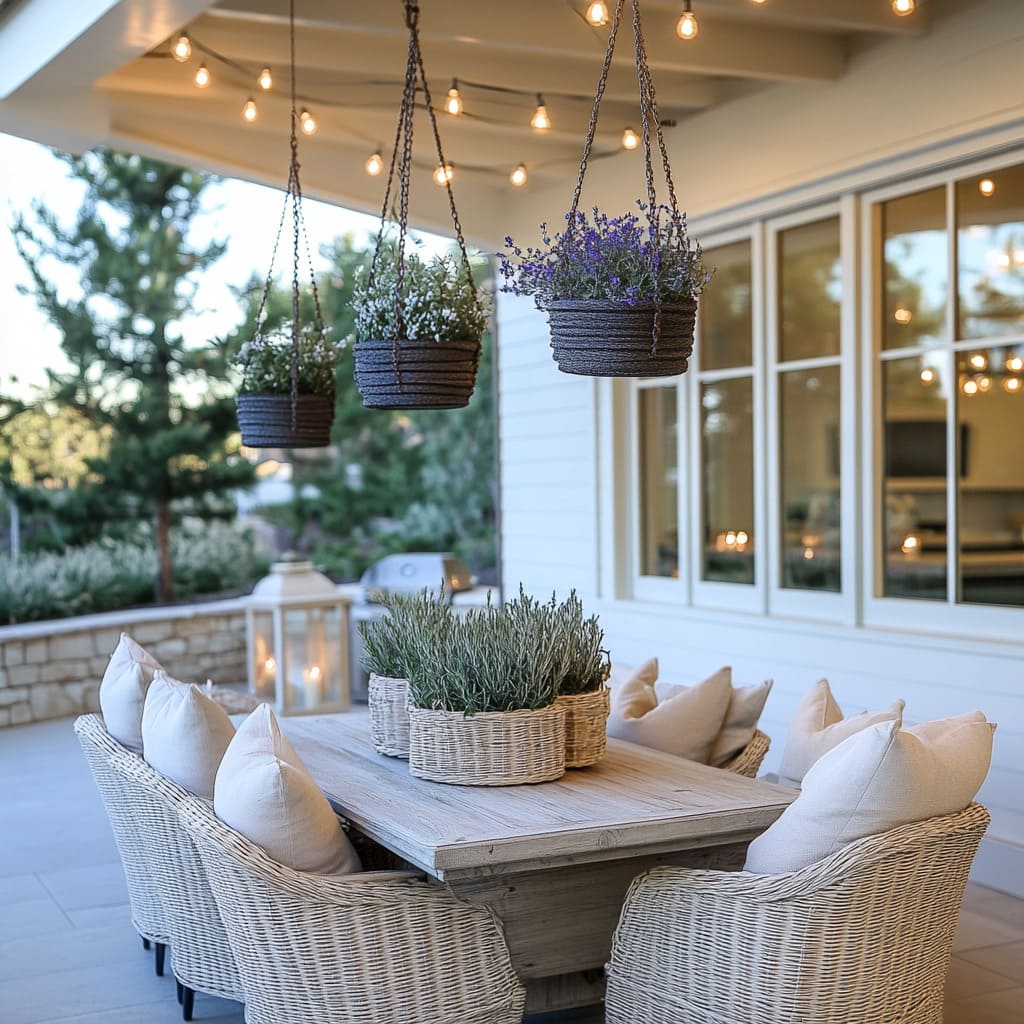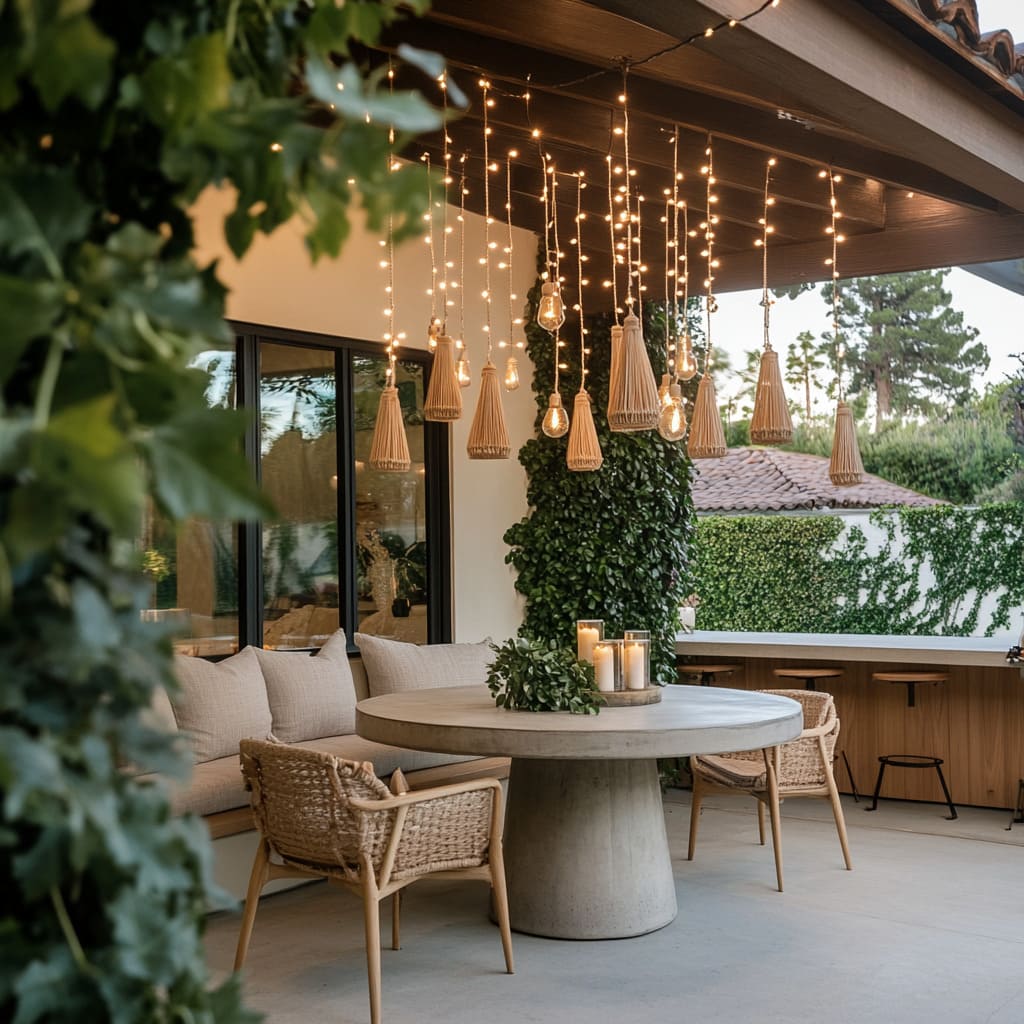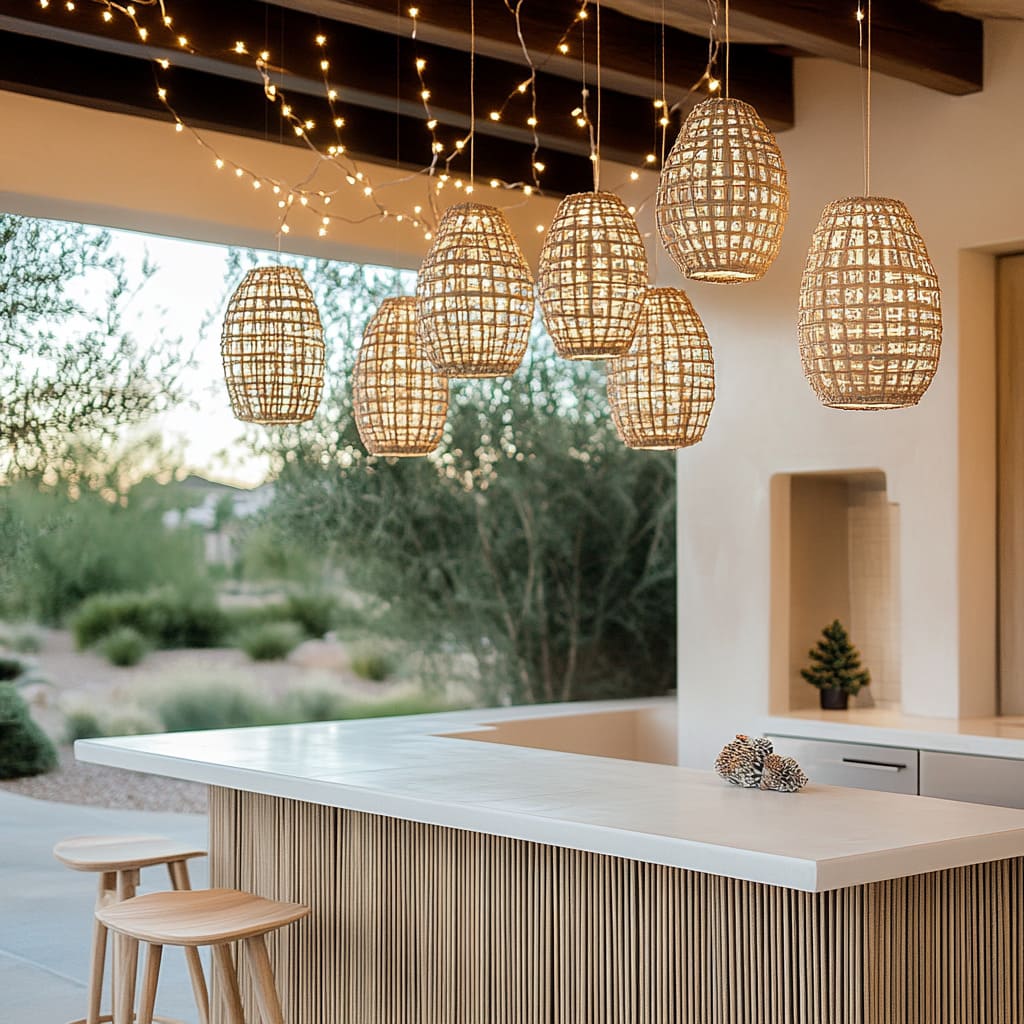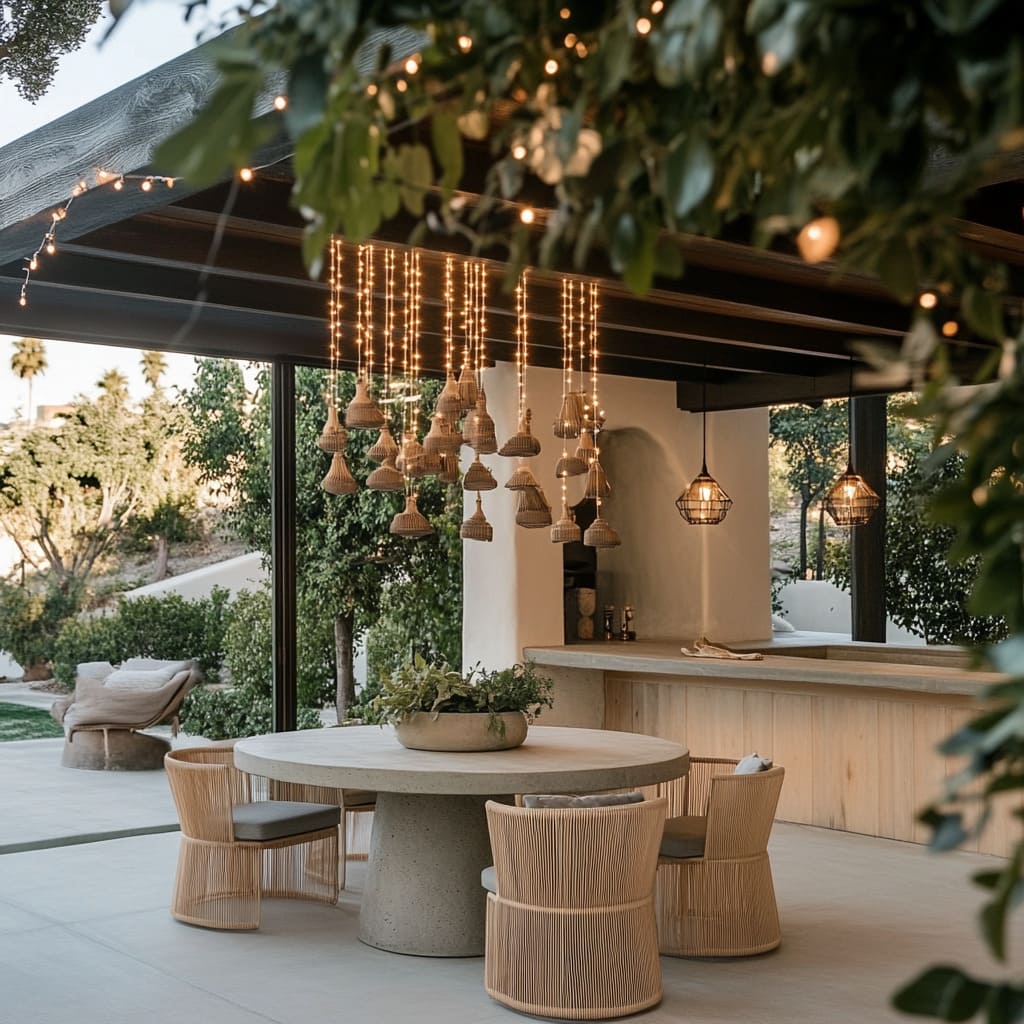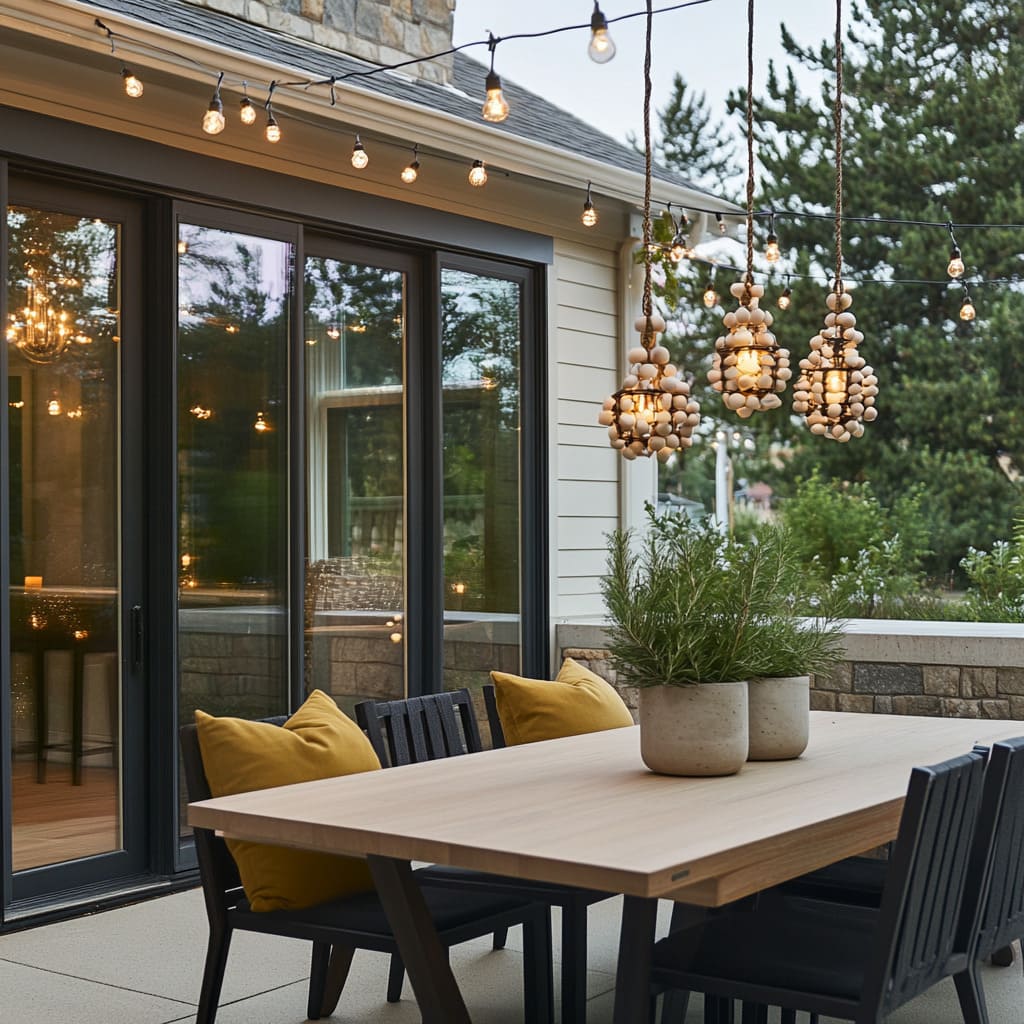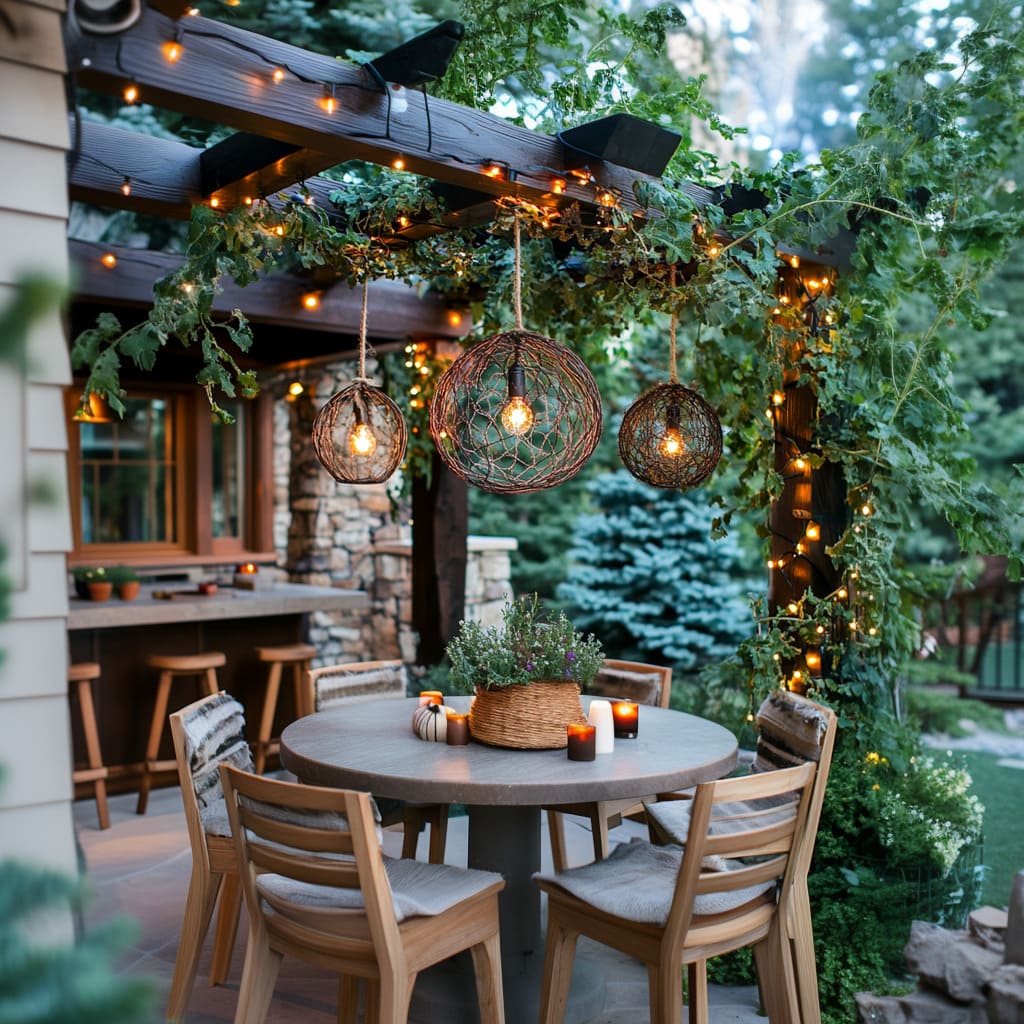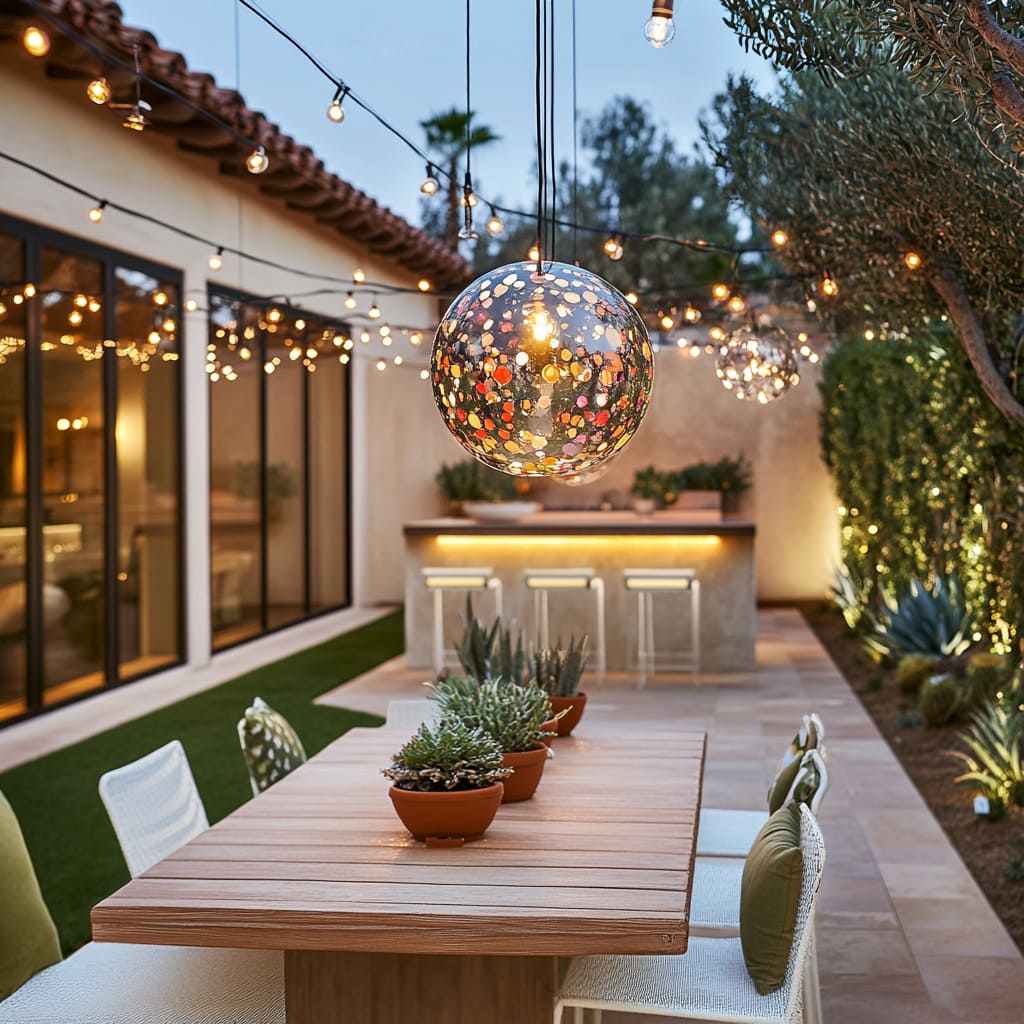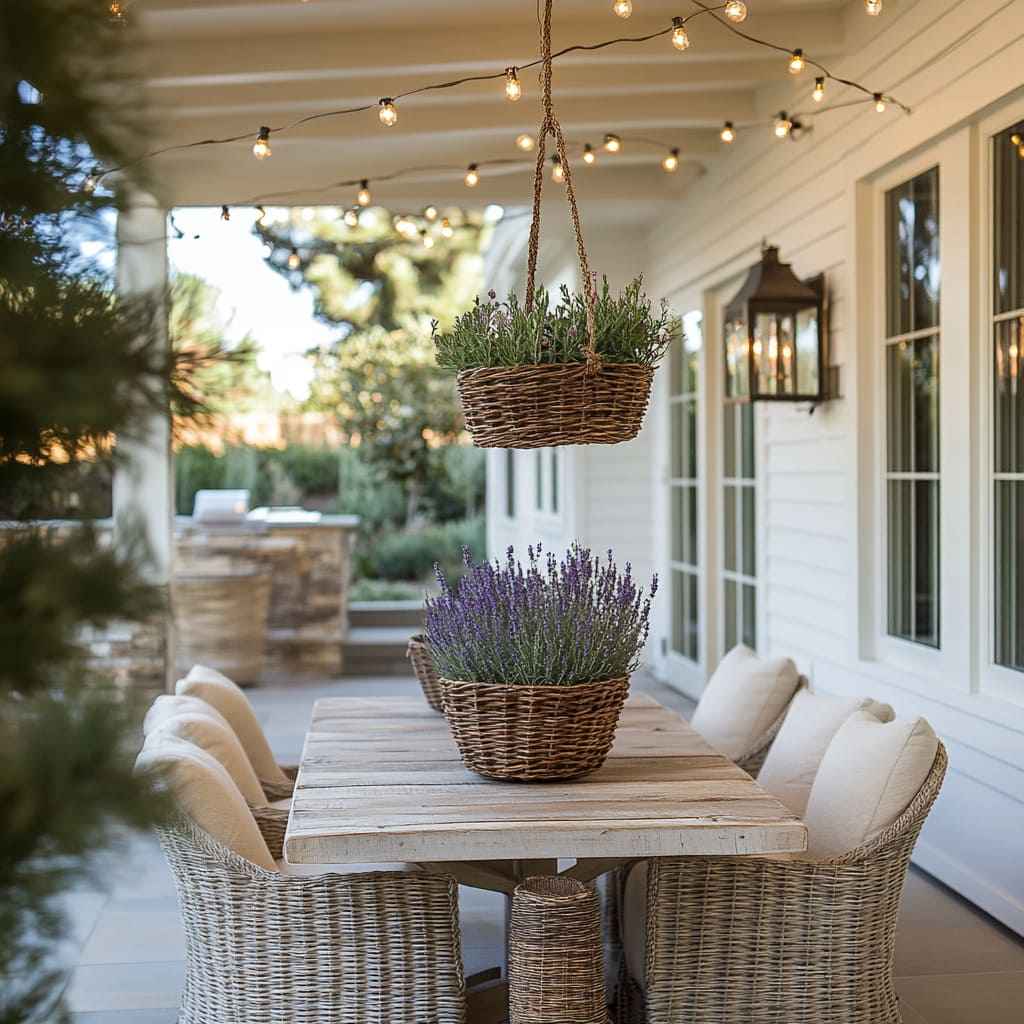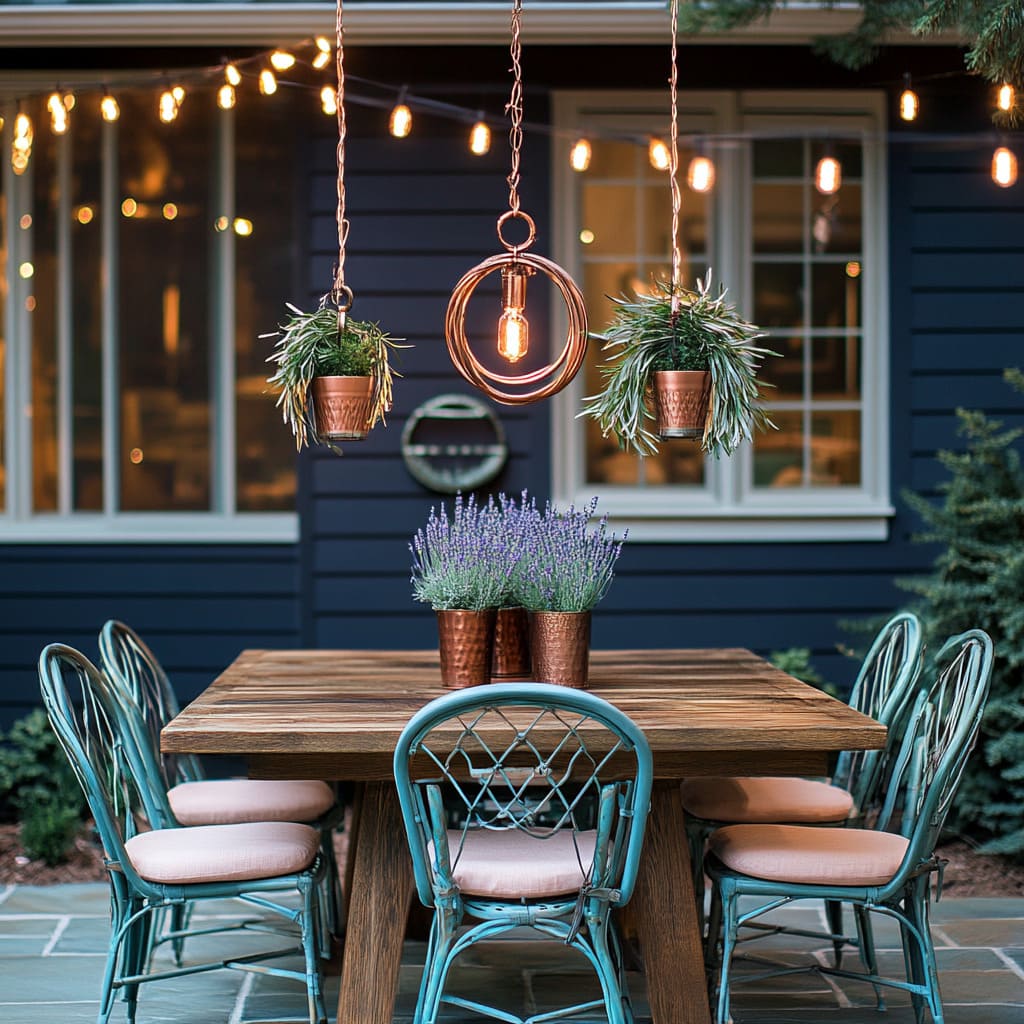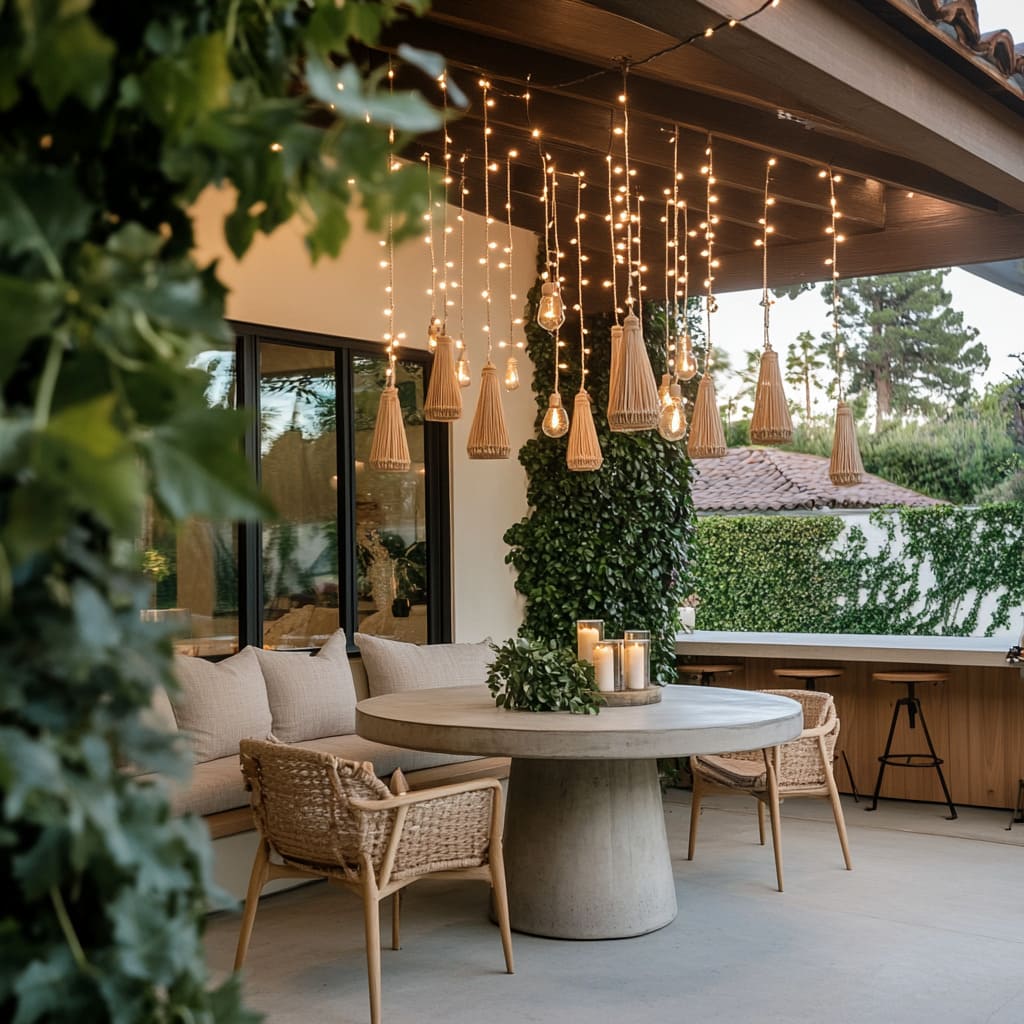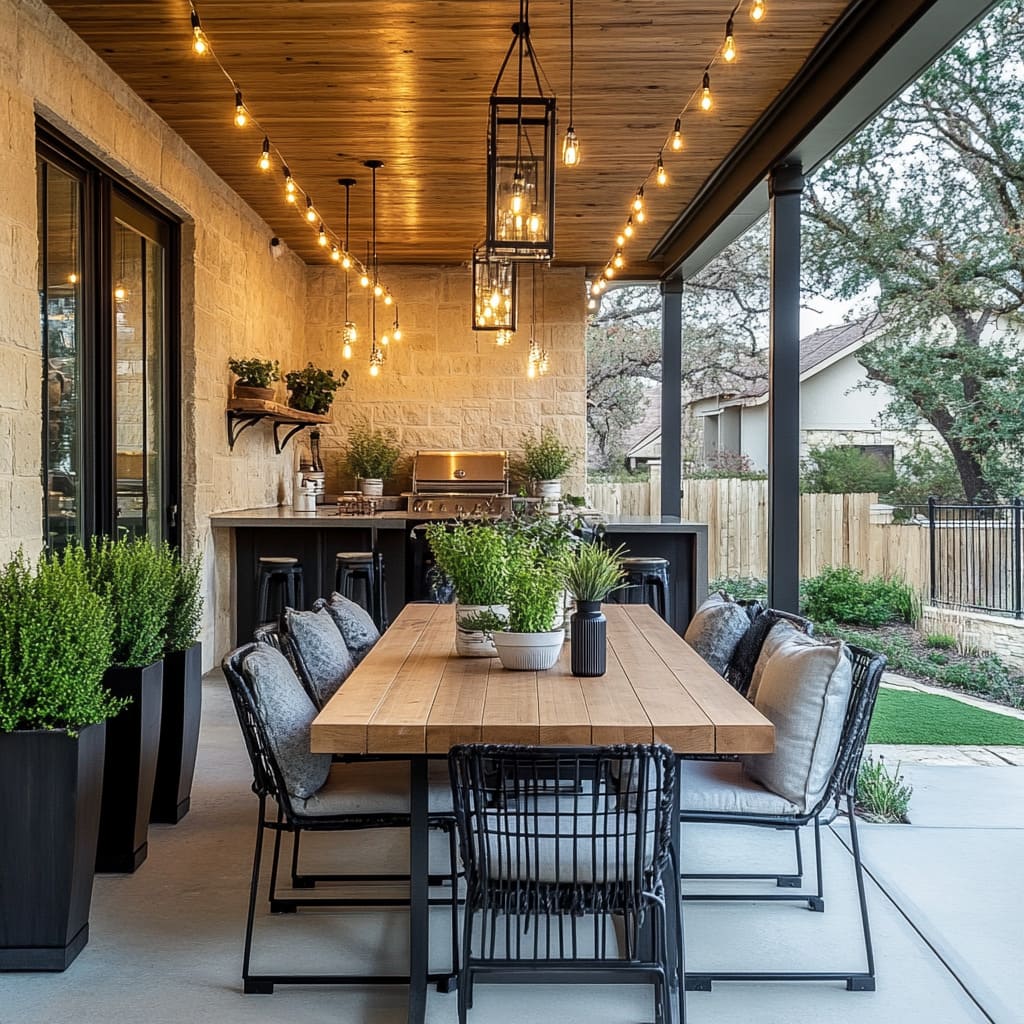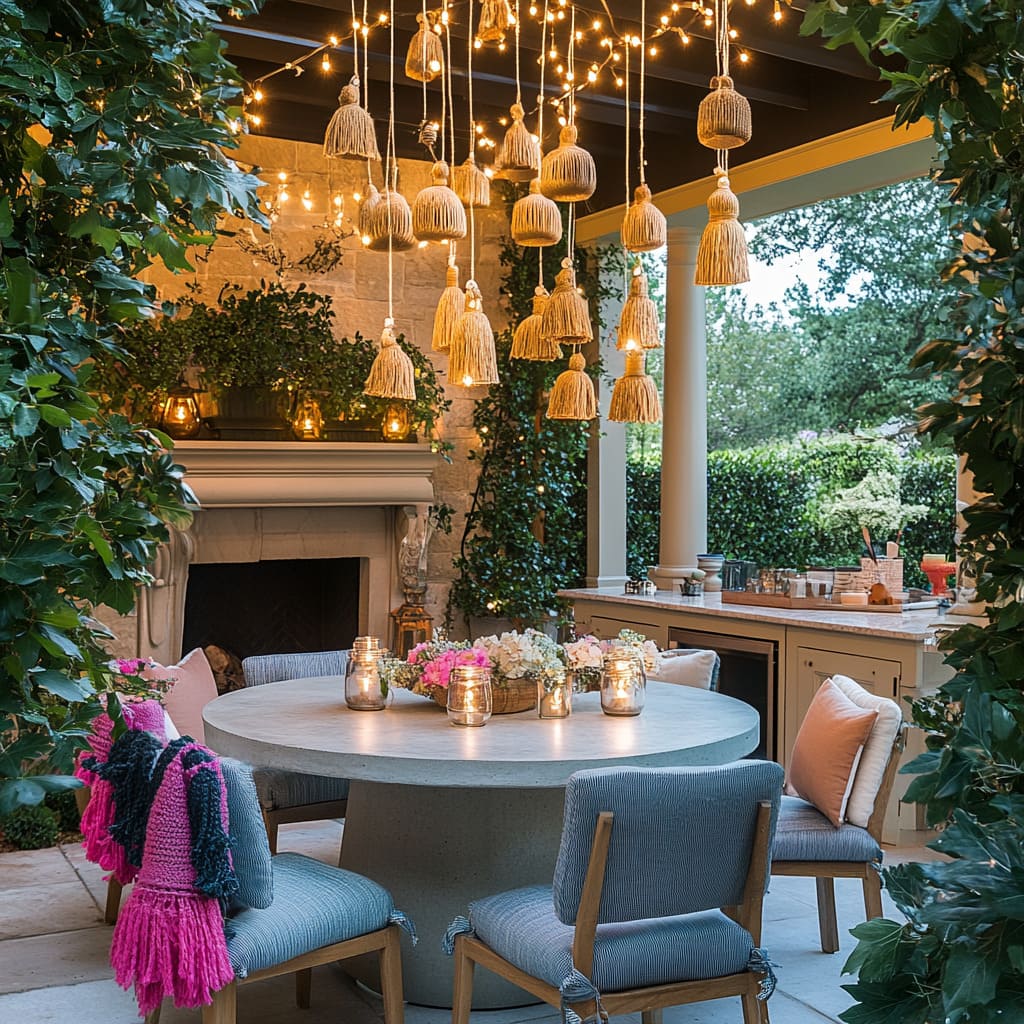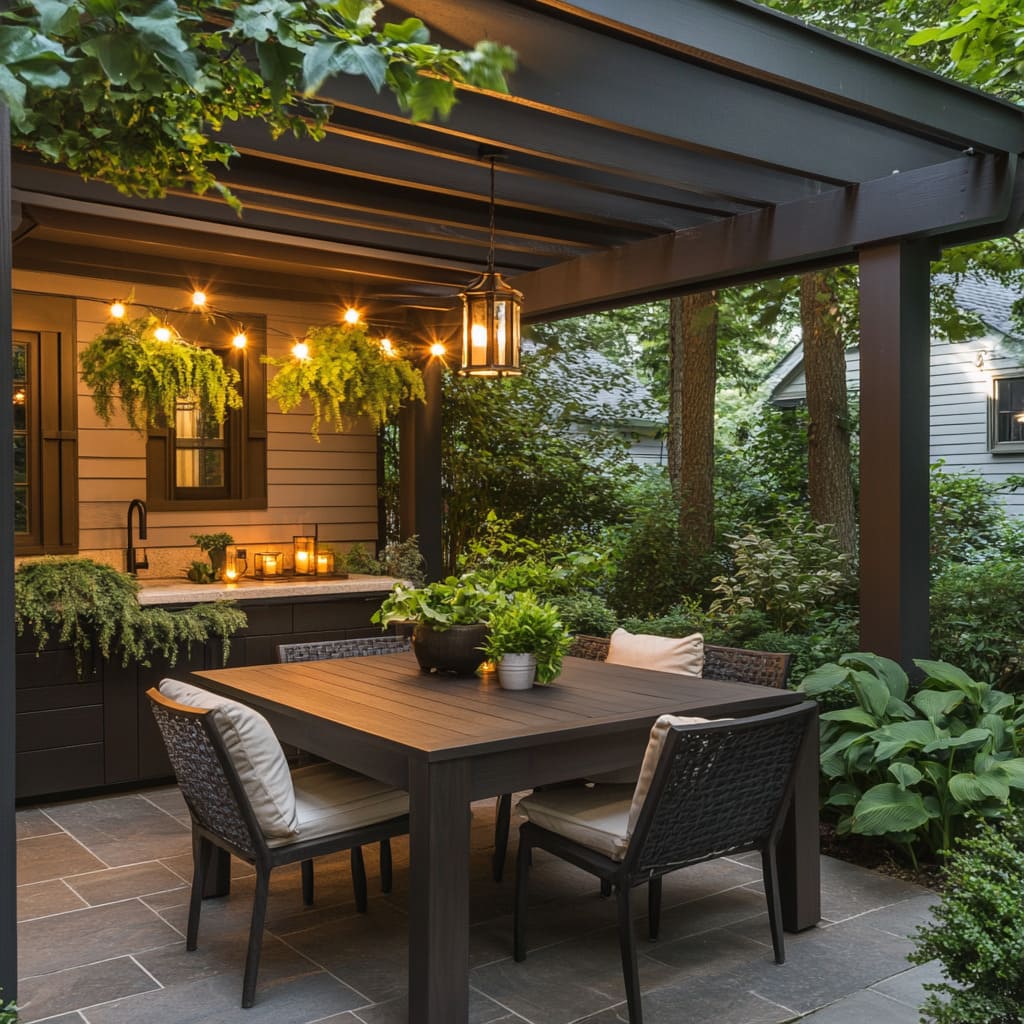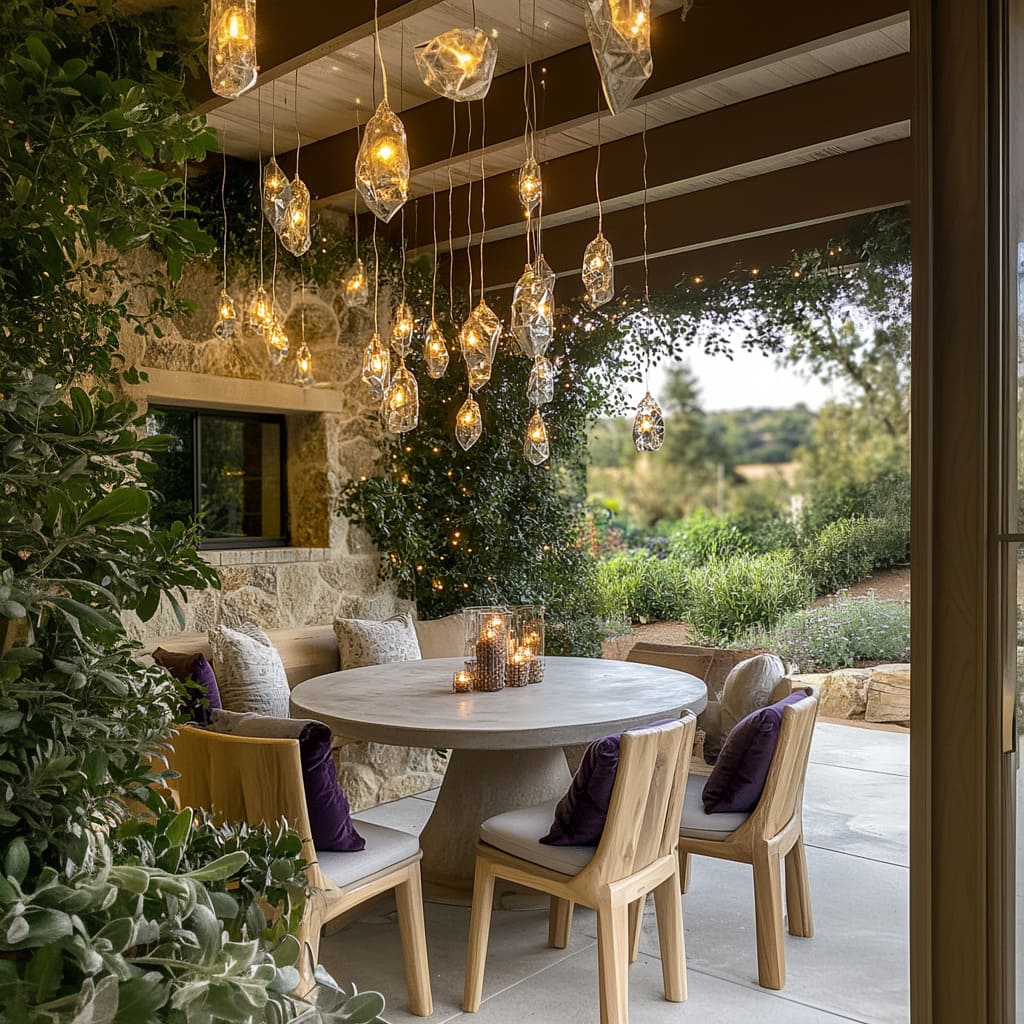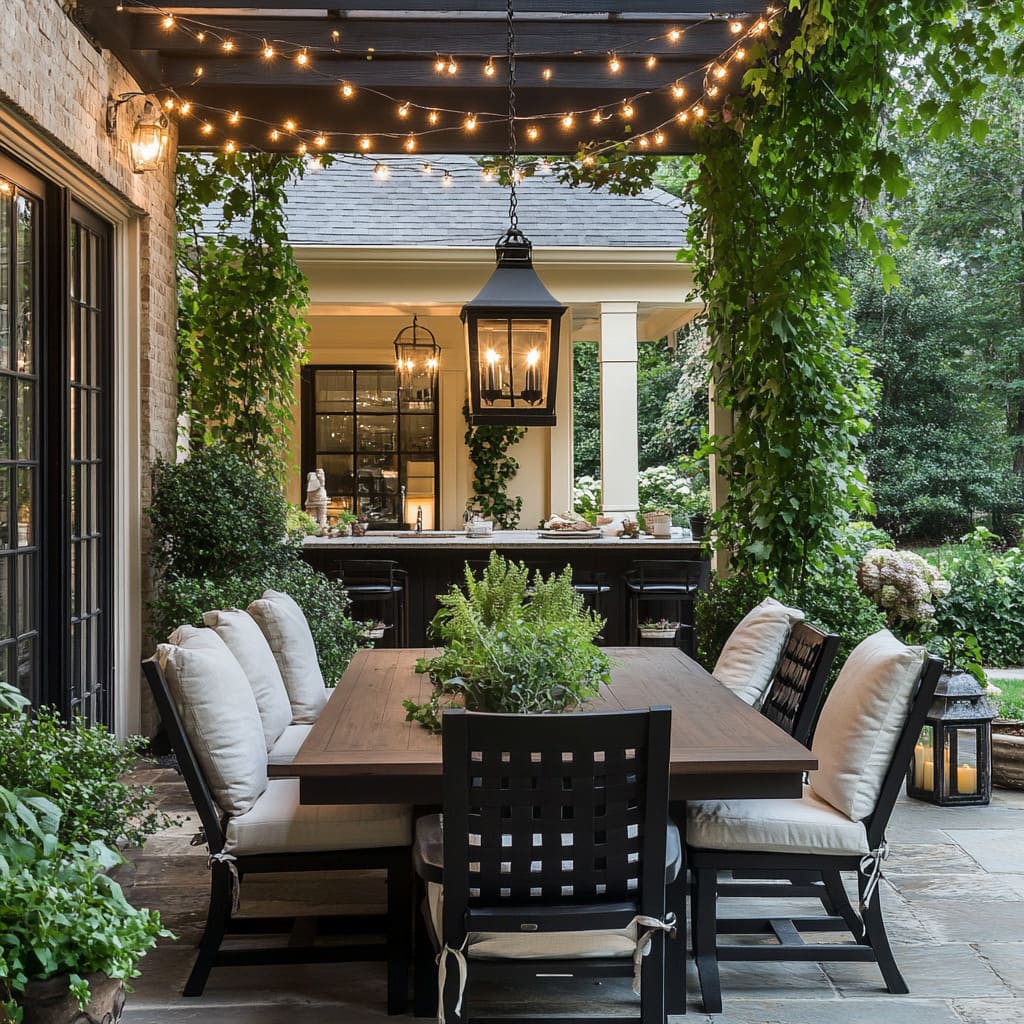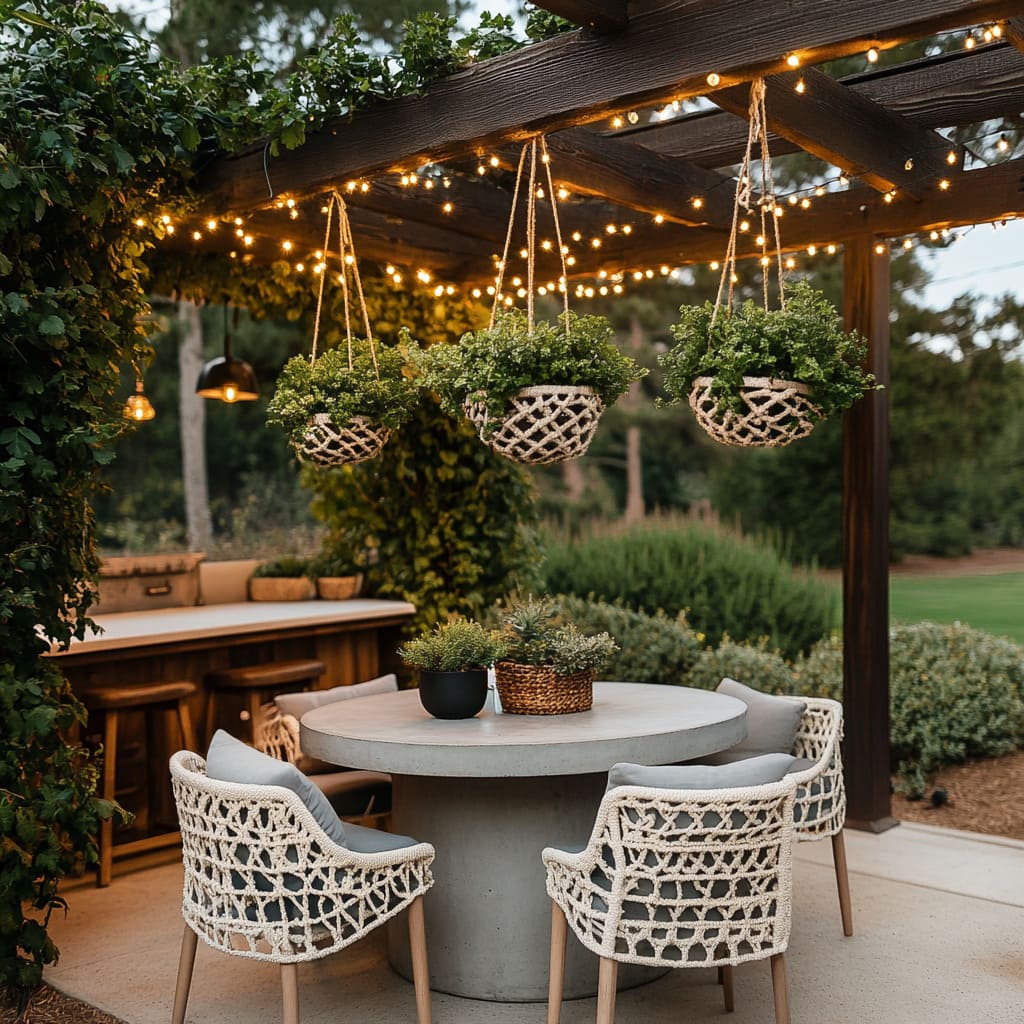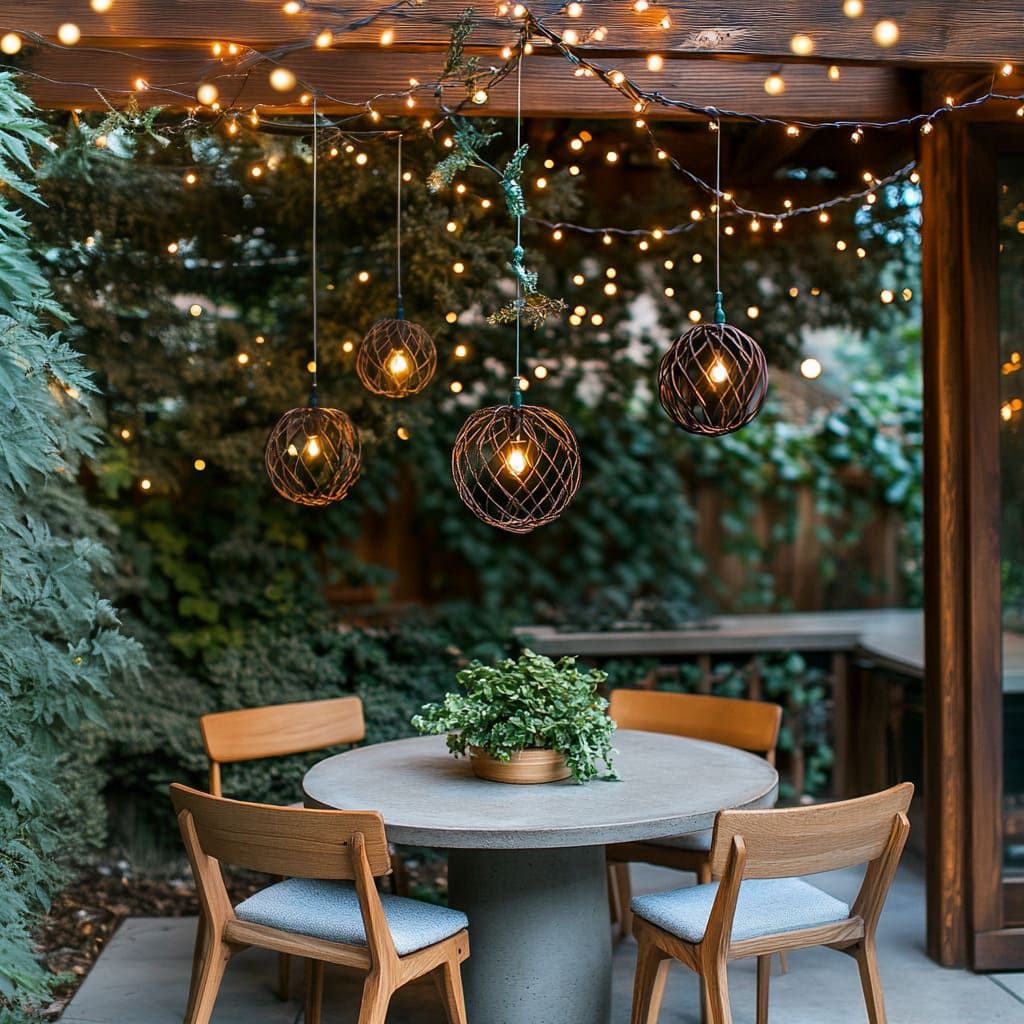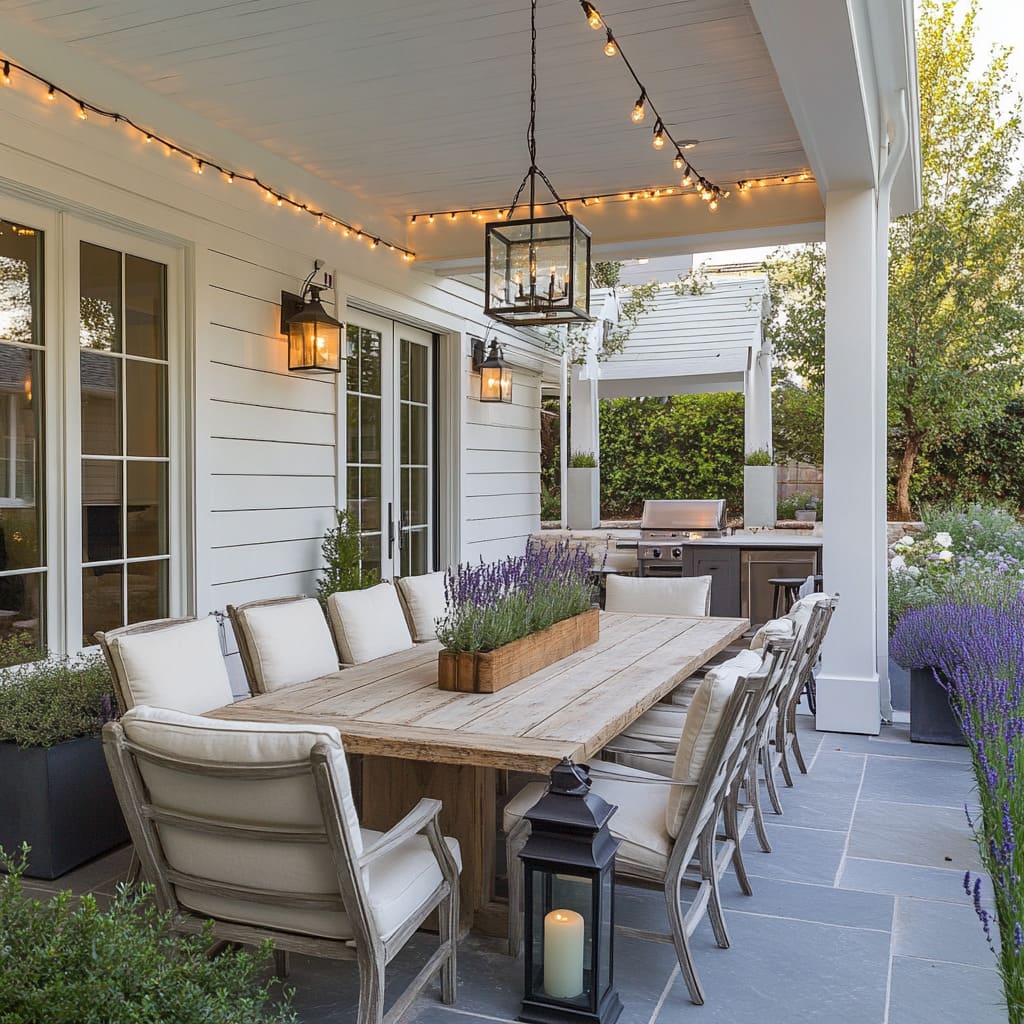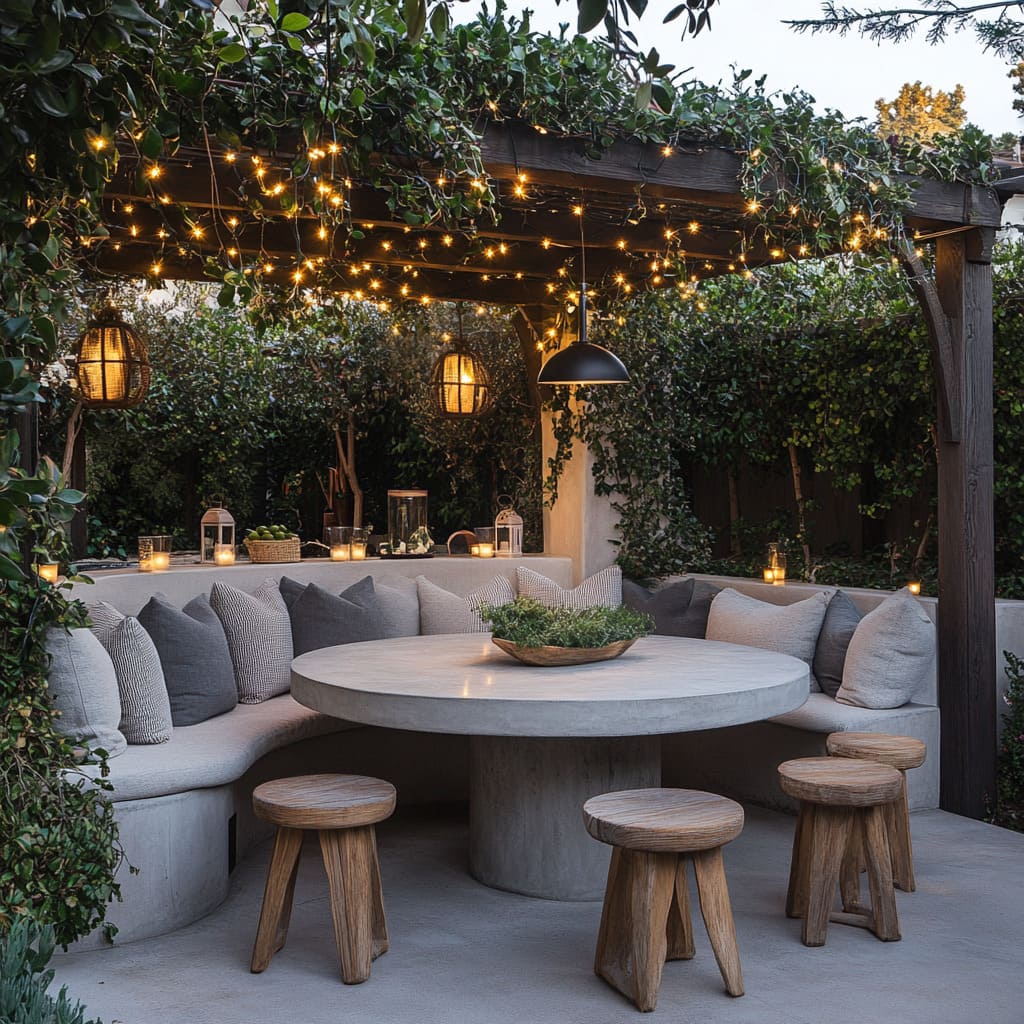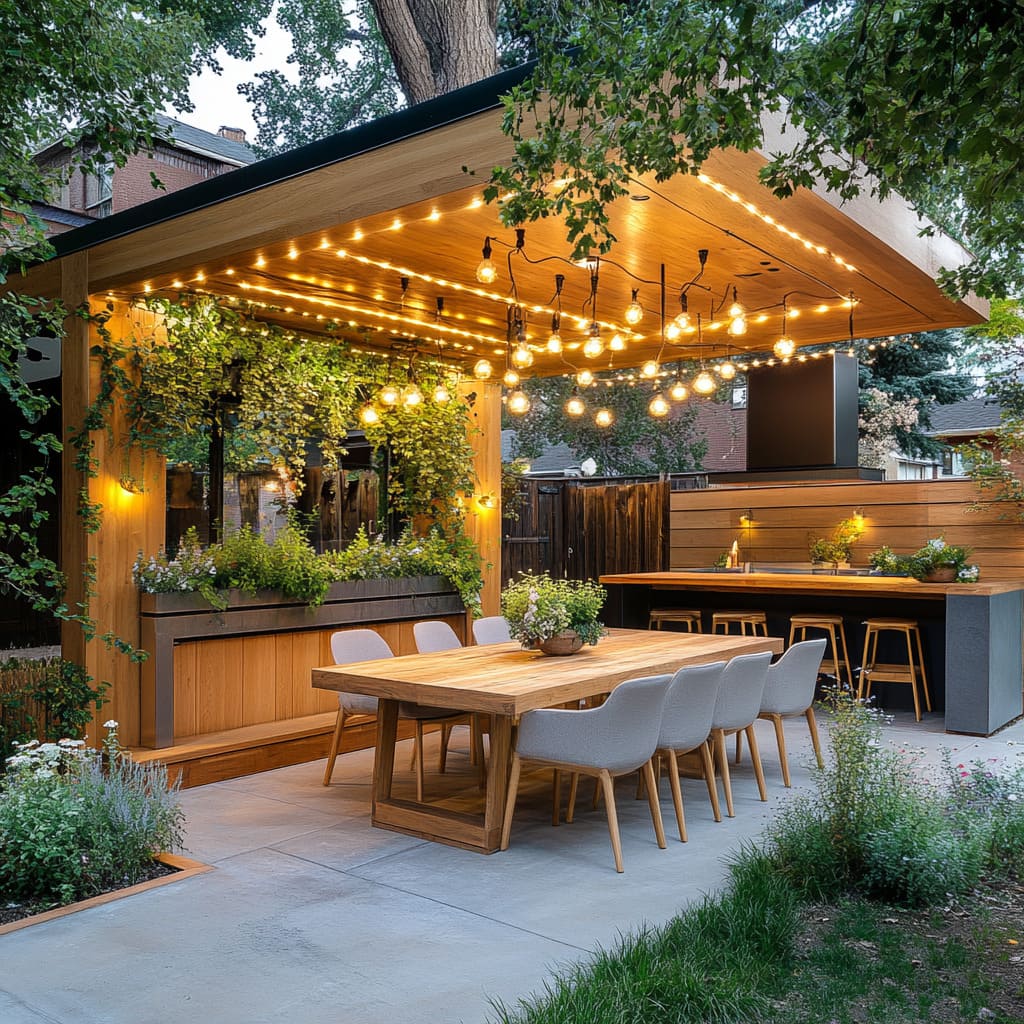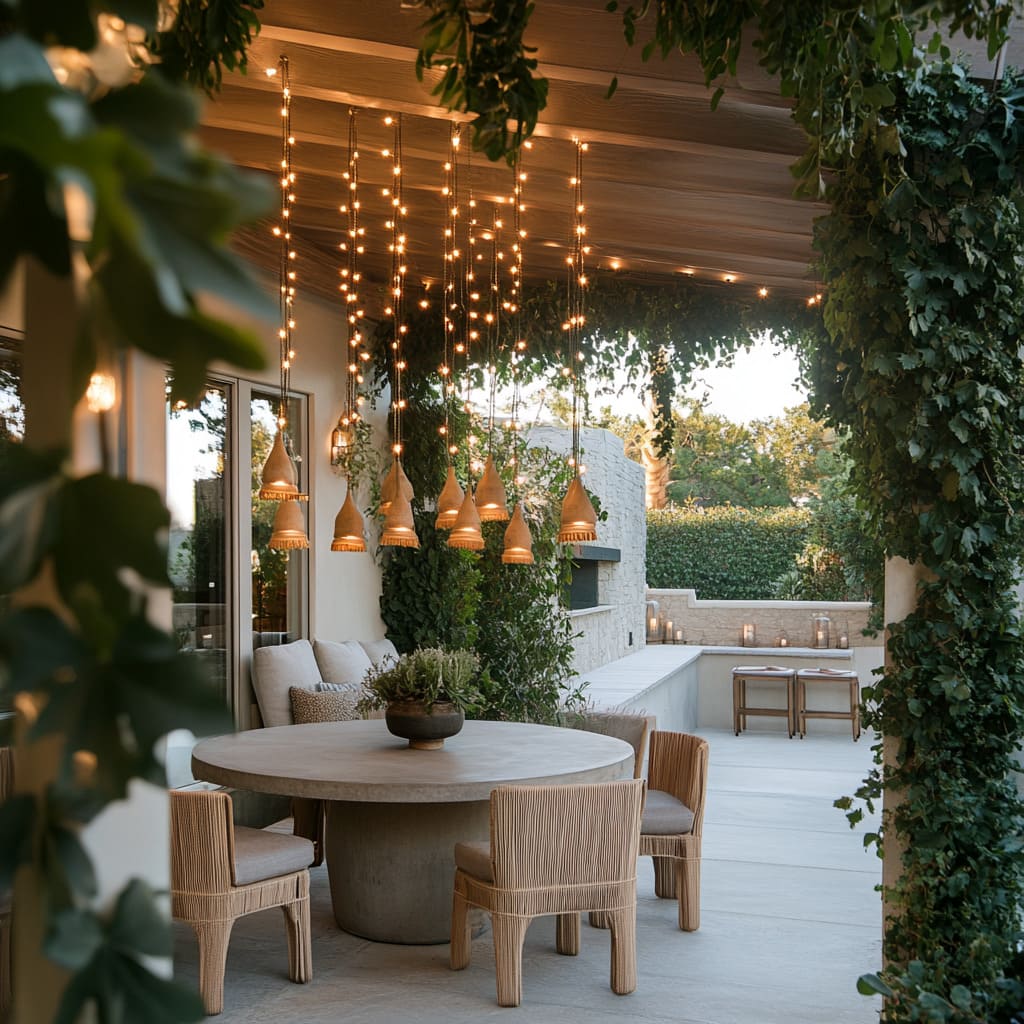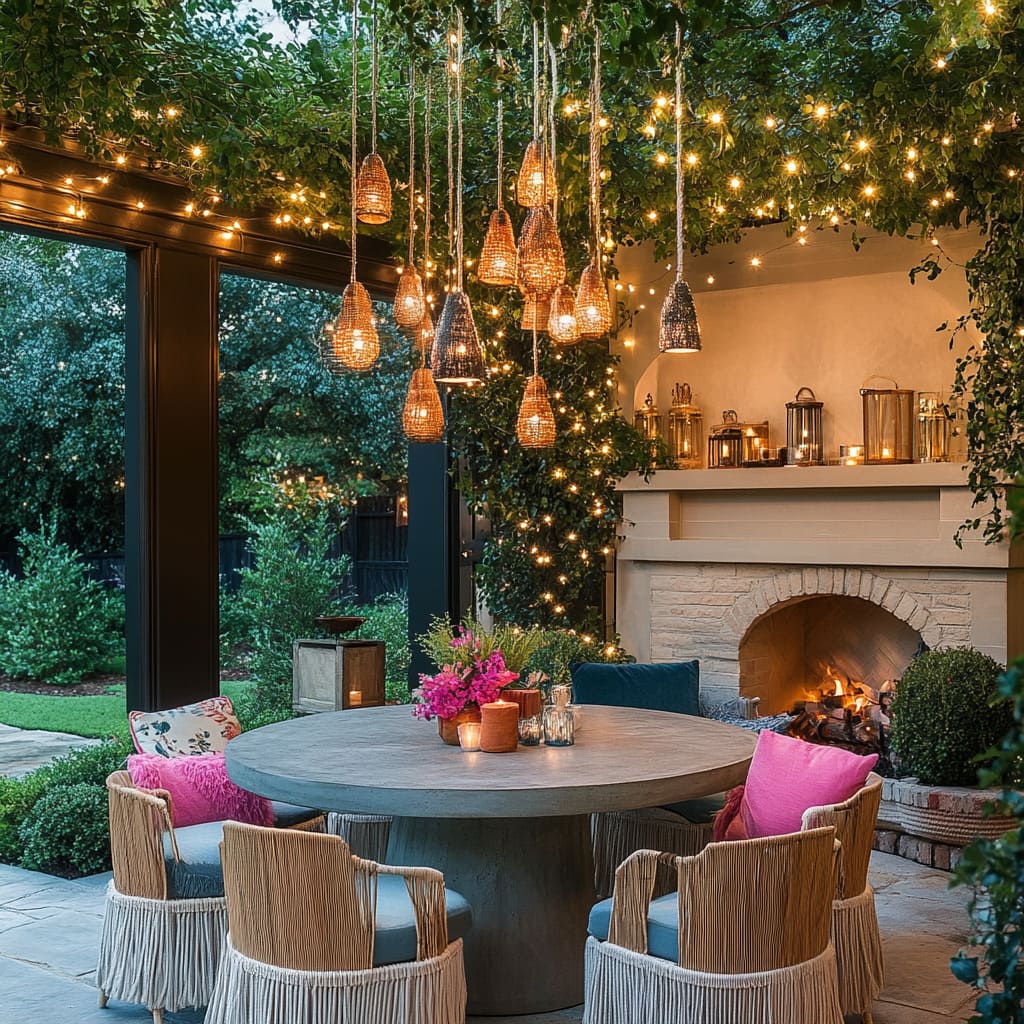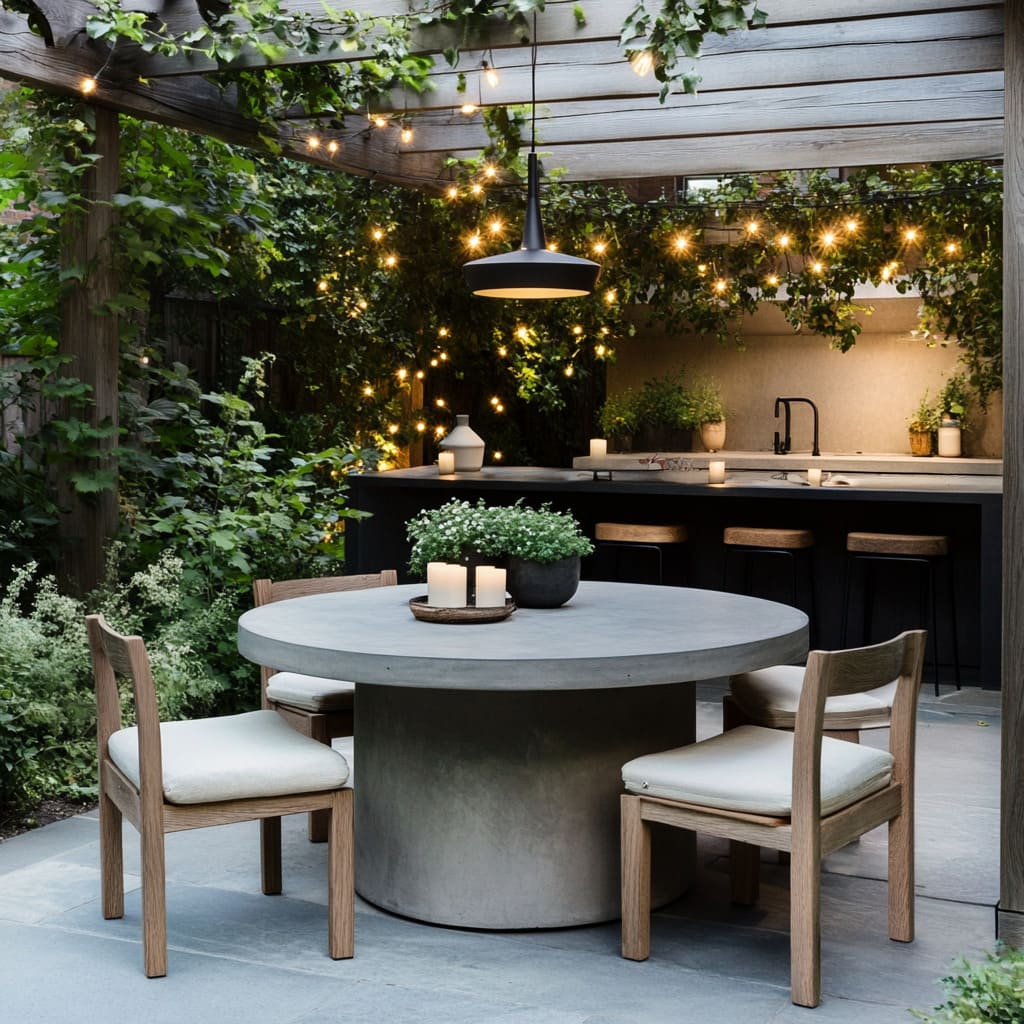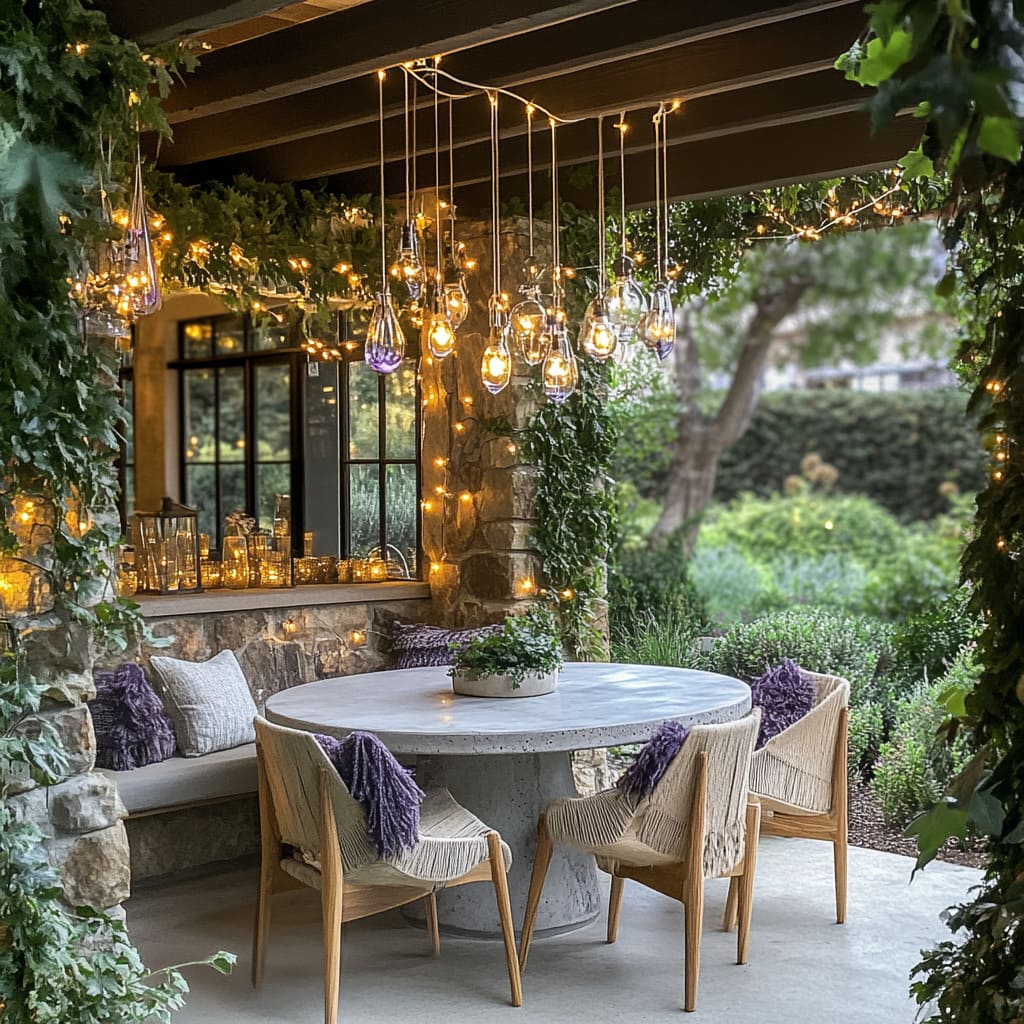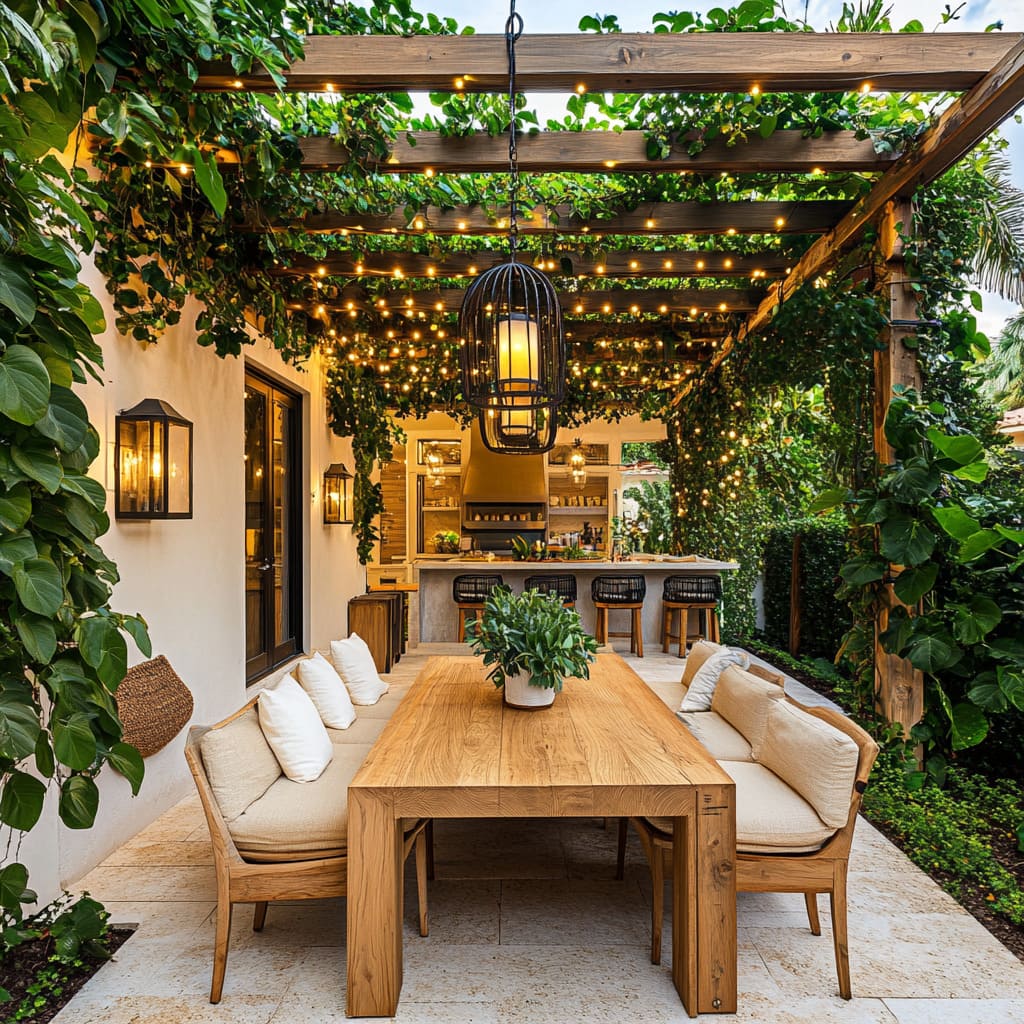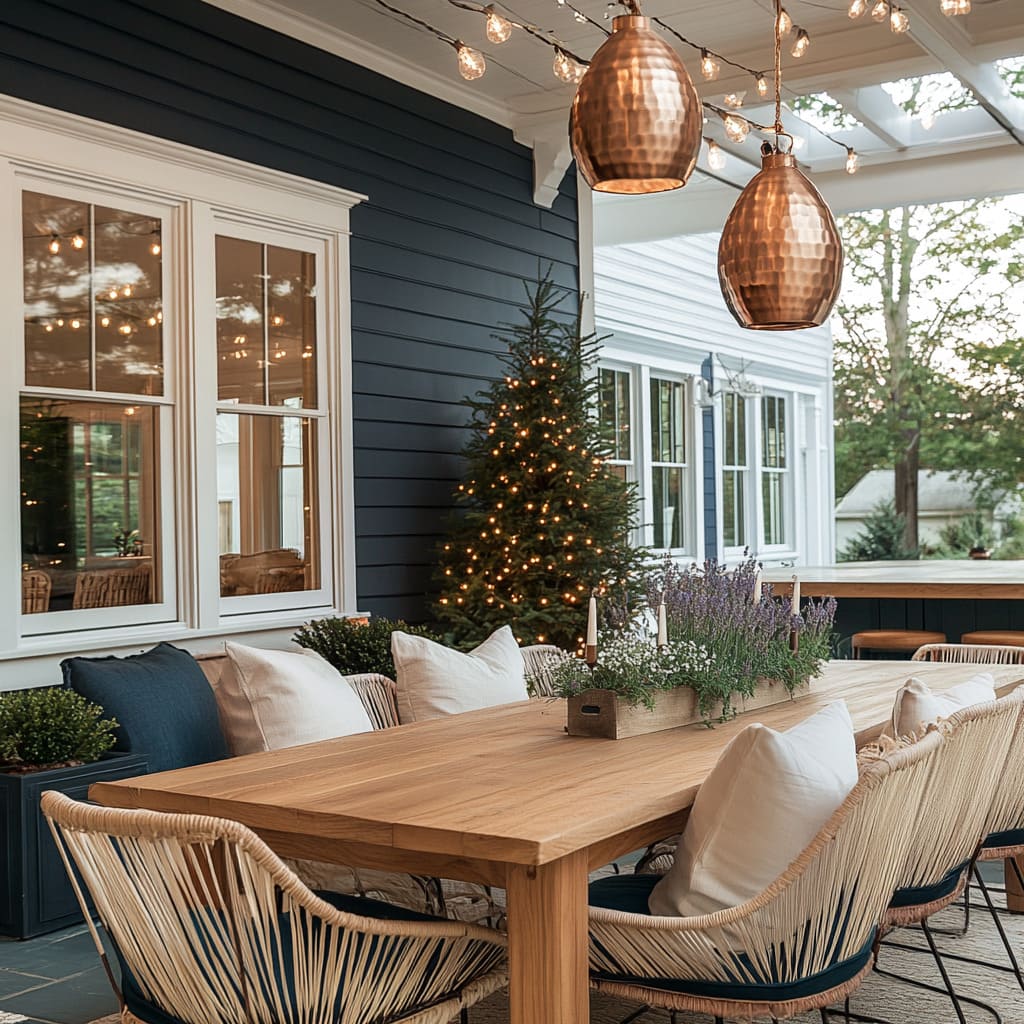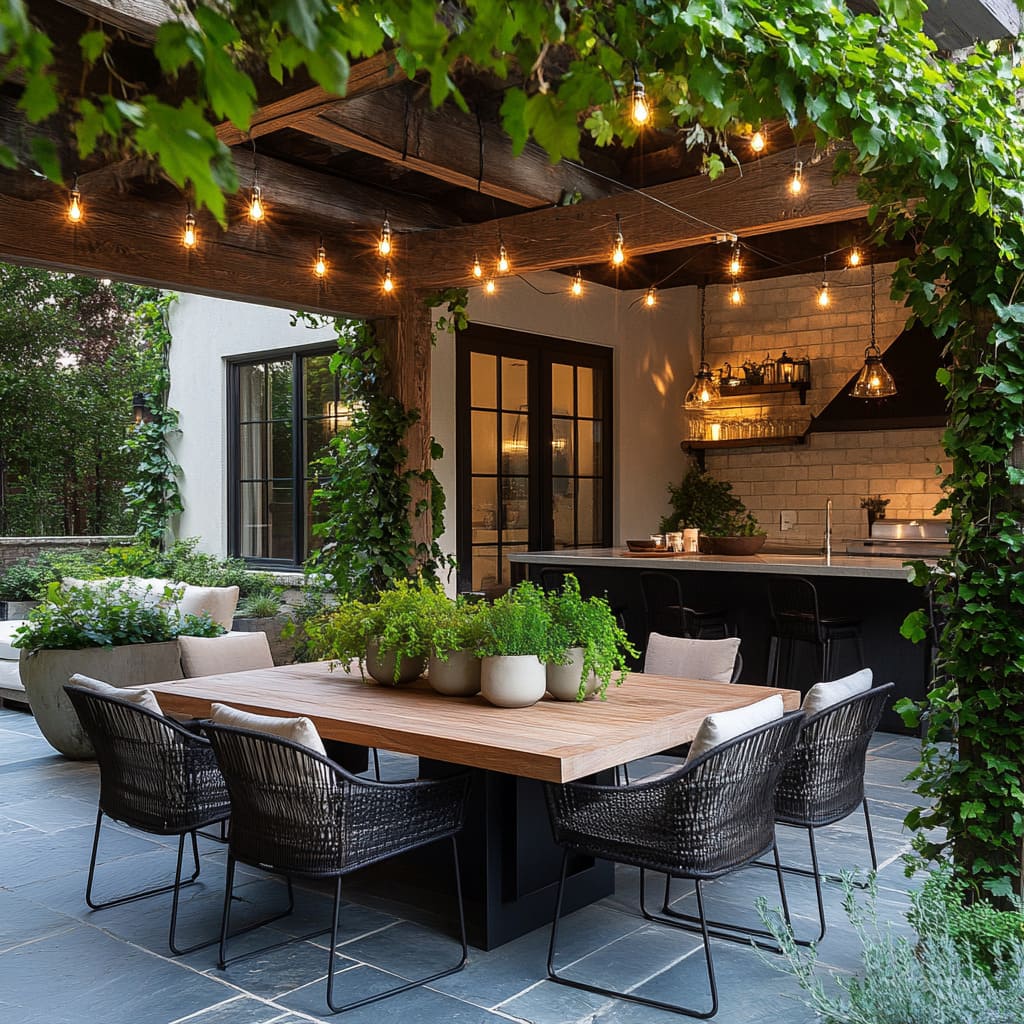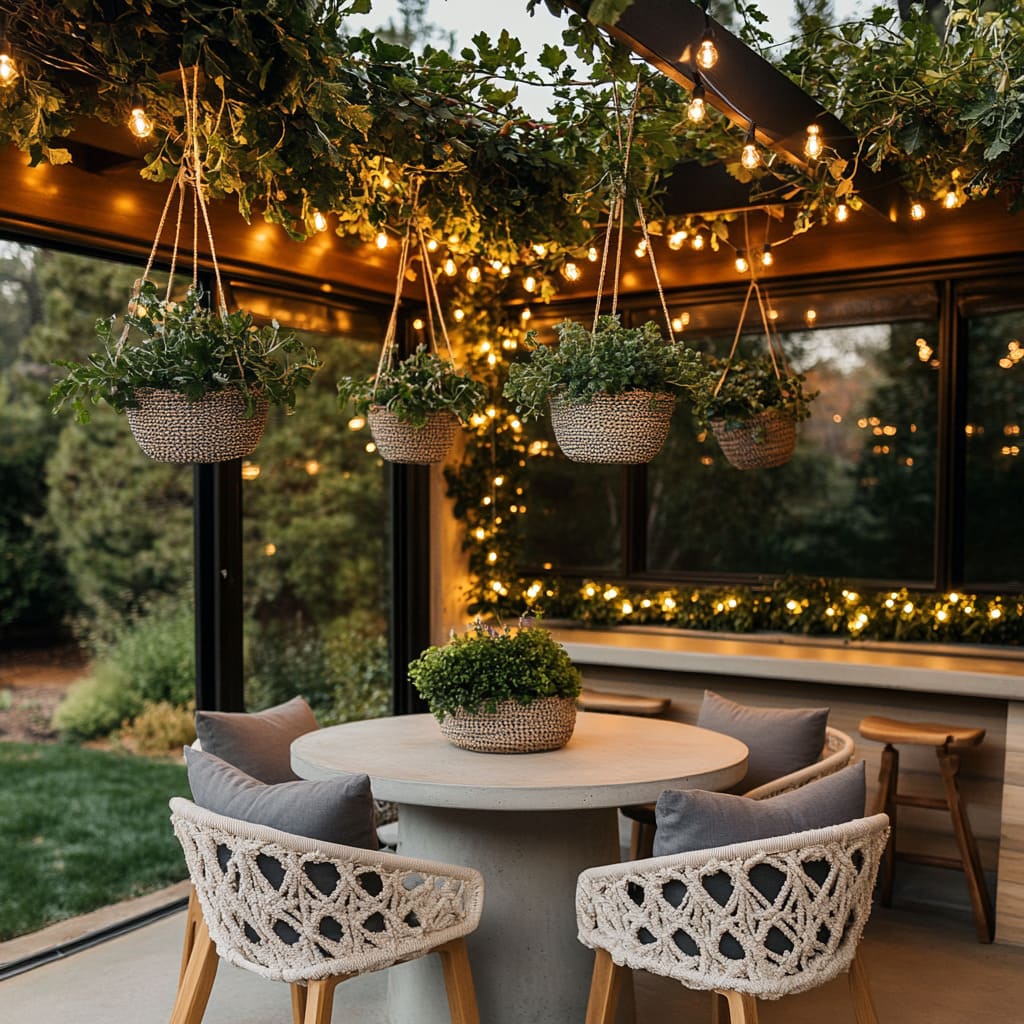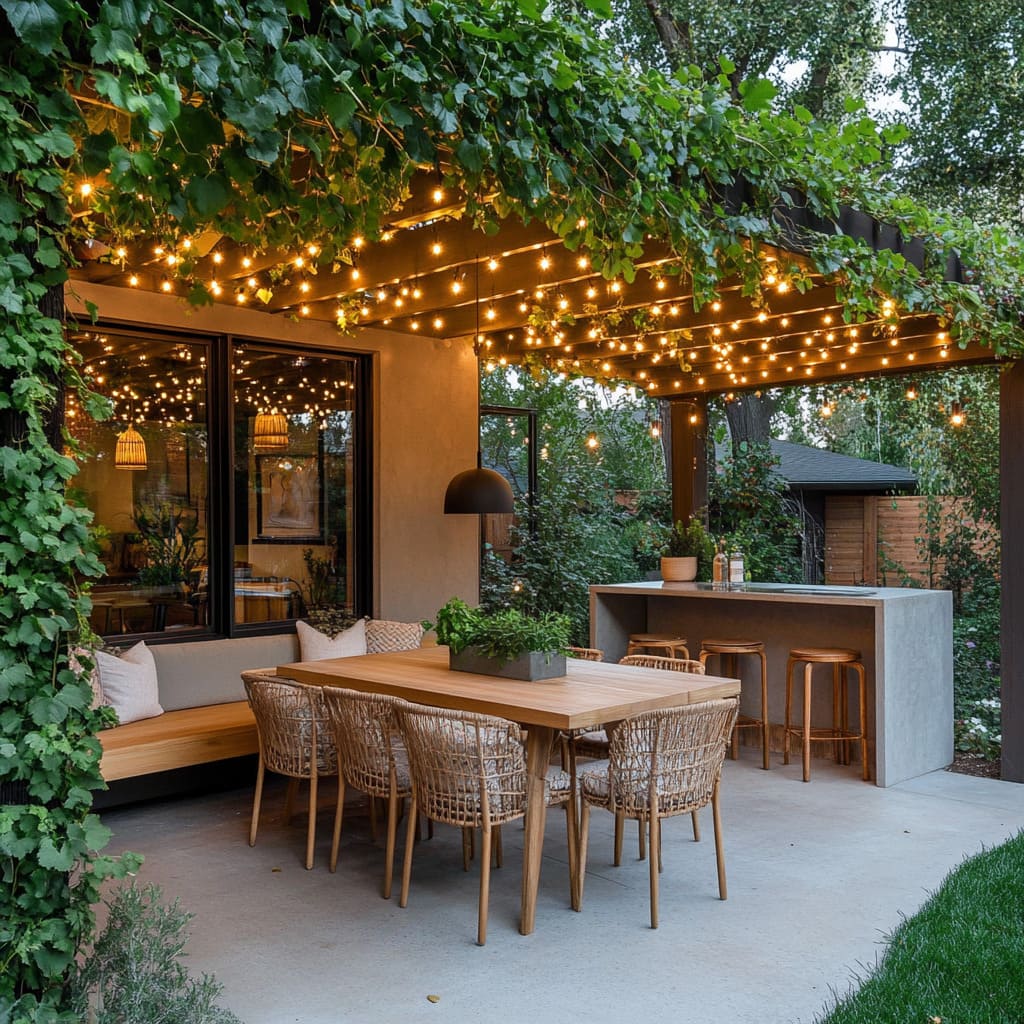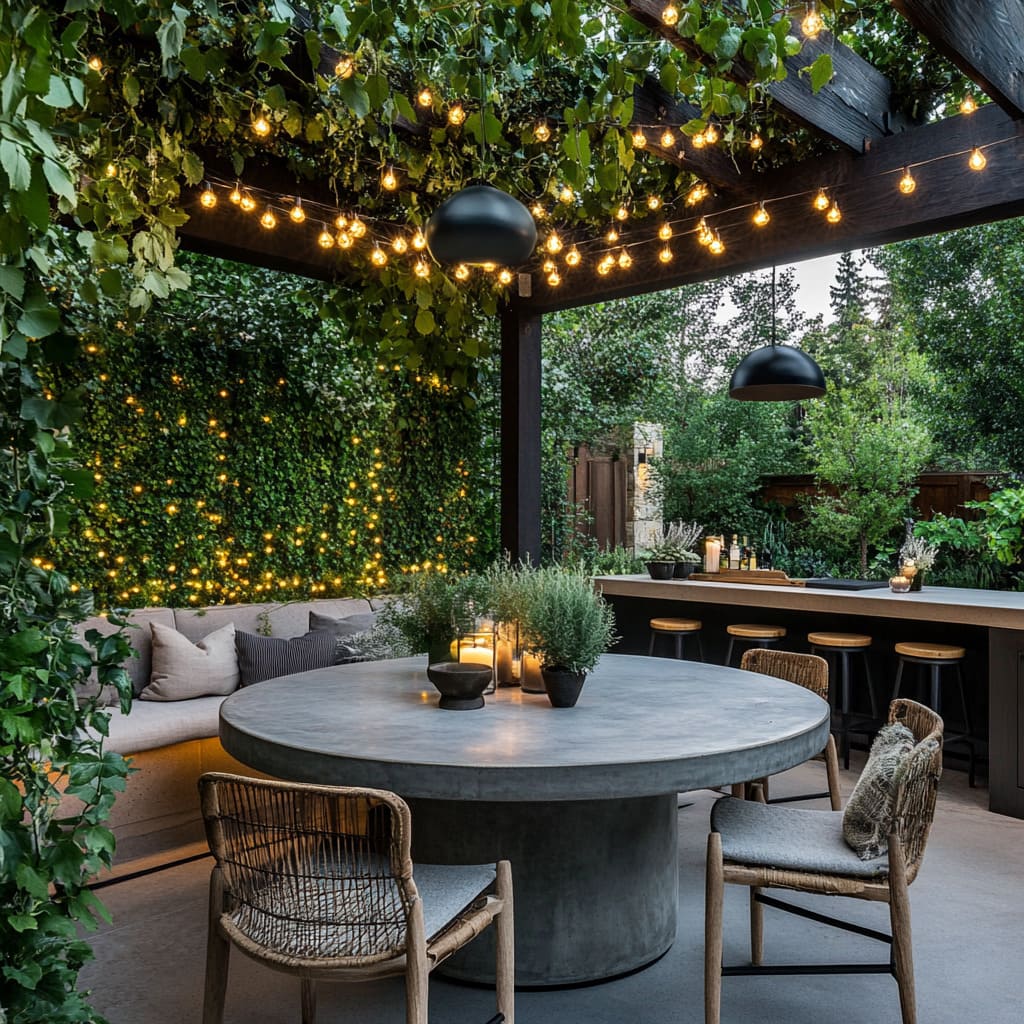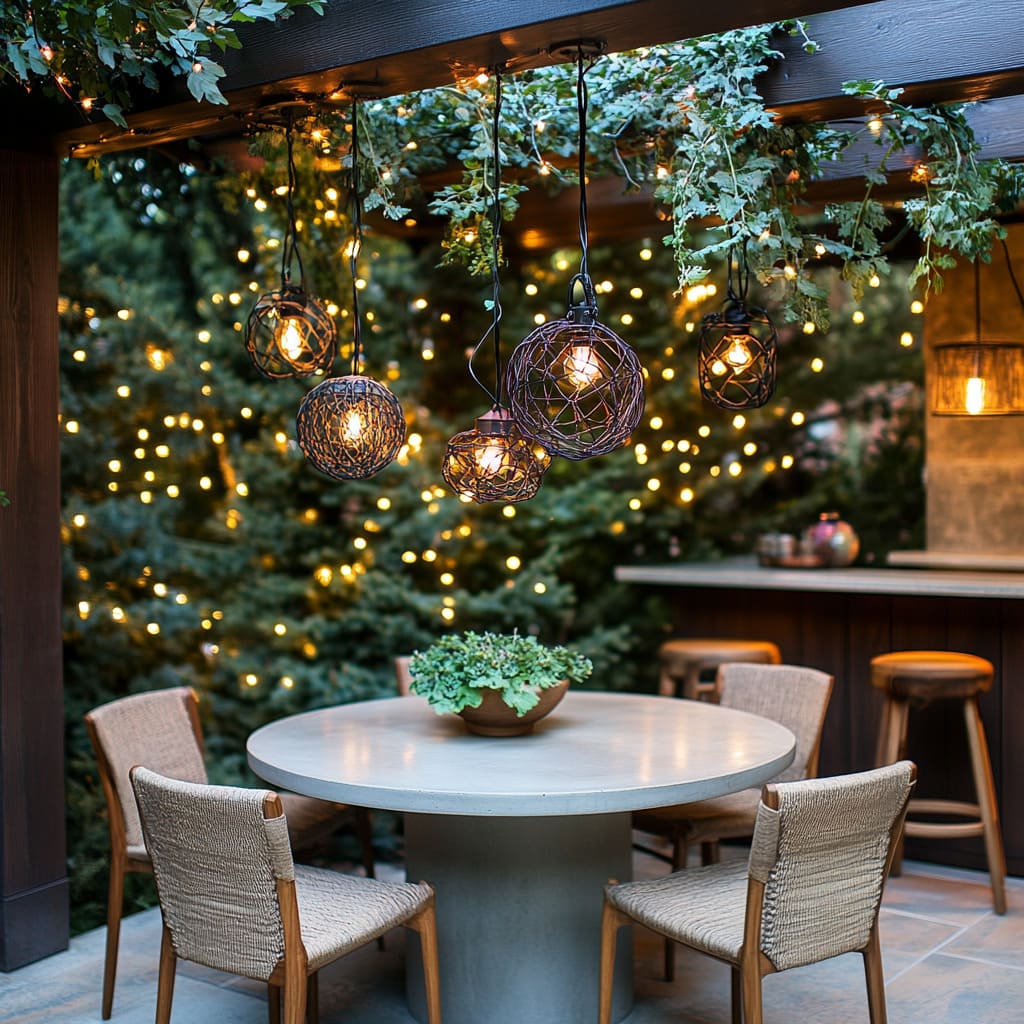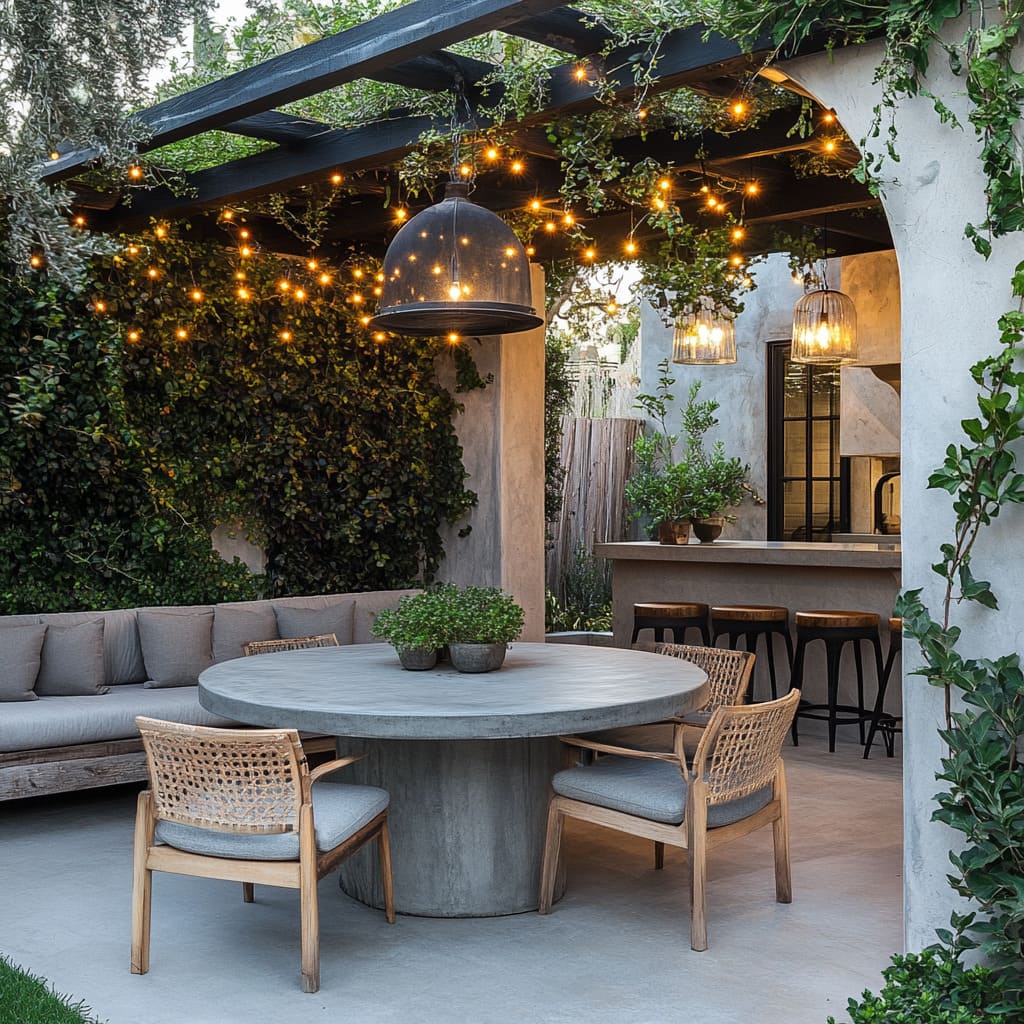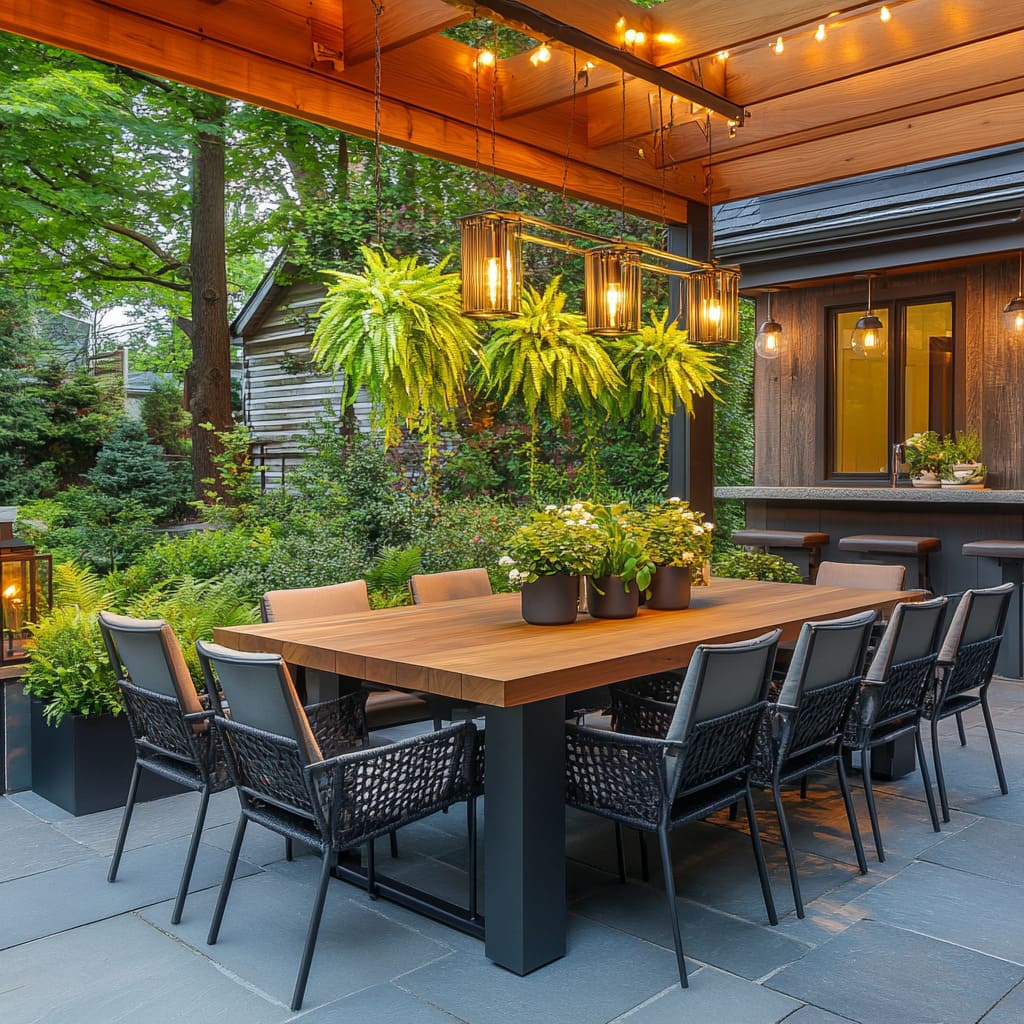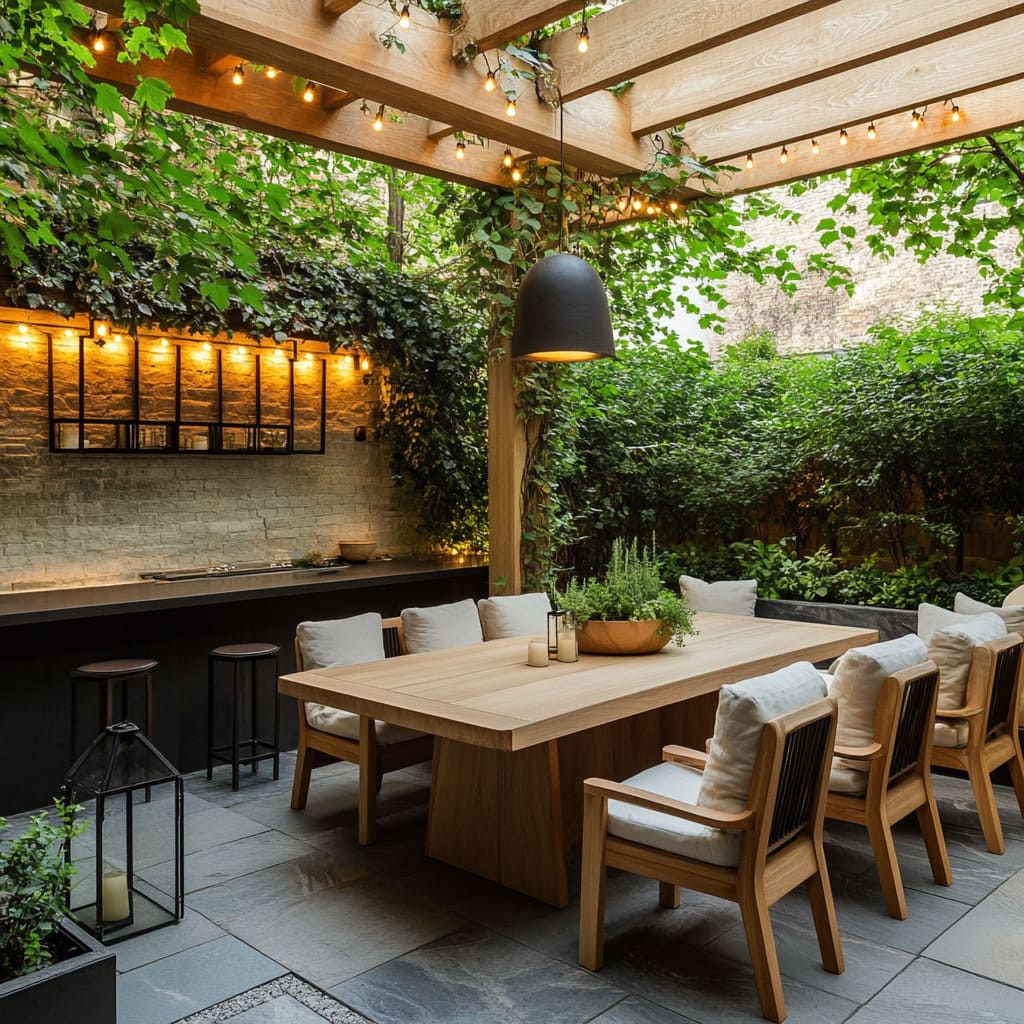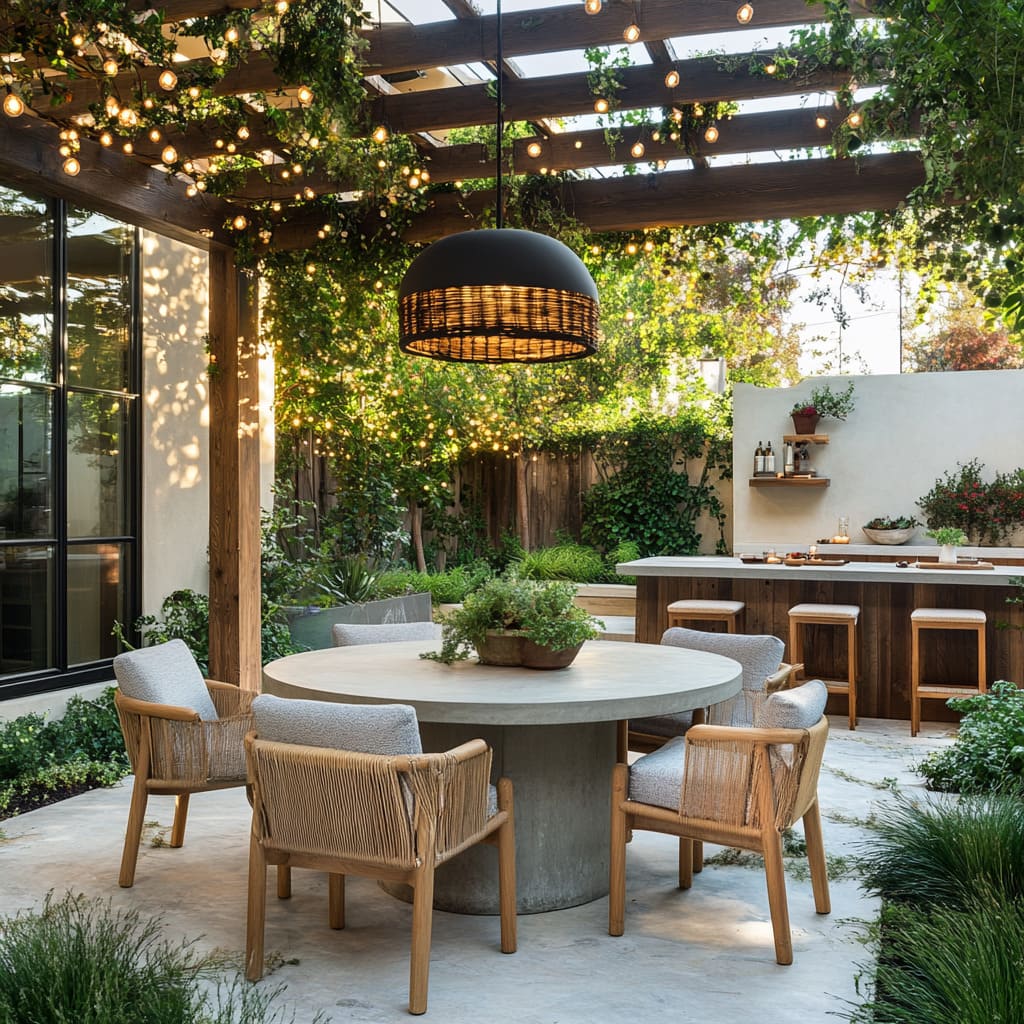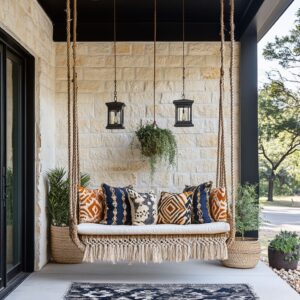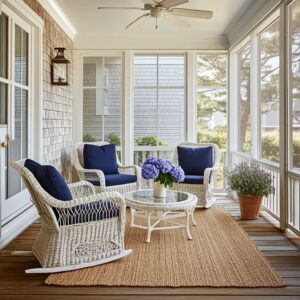An outdoor dining space can be the heart of a backyard, offering a perfect setting to enjoy meals, entertain friends, or simply take in the fresh air. With a little planning, even the simplest backyard can transform into a welcoming extension of your home.
American homeowners are increasingly looking to make better use of their outdoor spaces, and crafting a dedicated area for dining is one of the most rewarding upgrades you can make. Creating a backyard oasis isn’t just about adding a table and chairs; it’s about combining function and style in a way that suits your lifestyle.
Imagine a dining table set beneath a vine-covered pergola, surrounded by string lights casting a soft glow as the evening sets in. This combination of thoughtful design and natural elements can turn an ordinary yard into a warm, inviting retreat.
Whether your style leans toward modern simplicity, rustic charm, or something in between, finding the right balance of furniture, lighting, and decor is key to making the space feel like an extension of your home.
Outdoor dining design ideas vary widely, but the best spaces focus on comfort and versatility. A carefully chosen dining table—perhaps crafted from natural wood or featuring weather-resistant finishes—becomes the centerpiece of the design.
Comfortable chairs with soft cushions make the space inviting, encouraging longer meals and gatherings. Layering in thoughtful details like a centerpiece of fresh herbs or colorful flowers can personalize the area while keeping the focus on the relaxed, outdoor vibe.
The layout also plays a major role in ensuring the space is both practical and beautiful. Whether it’s adding shade through ideas for pergolas or opting for low-maintenance landscaping, the goal is to create a setting that blends seamlessly with your backyard.
For those inspired by modern designs in urban areas like California, concrete patio designs offer a sleek foundation that’s both durable and stylish, giving a contemporary edge to outdoor spaces. These patios pair beautifully with wooden accents, lush greenery, and thoughtfully placed lighting for a look that’s as functional as it is visually appealing.
By prioritizing comfort, aesthetics, and practicality, you can create a backyard dining area that feels just as enjoyable to use as it is to look at.
Choosing the Perfect Furniture for Style and Function
Types of Furniture Materials
The backbone of any outdoor dining area is its furniture, and the materials you choose can make or break the longevity and style of the space. For homeowners seeking durability and timeless appeal, weather-resistant wood, such as teak or cedar, is a top contender.
These woods not only withstand the elements but also develop a beautiful patina over time, enhancing their natural charm. A sleek wooden table, like the ones highlighted in various outdoor dining table ideas, provides a solid foundation for a sophisticated yet inviting setup.
For those in climates with heavier rainfall or intense sun, as seen in areas like Denver or Austin, metal furniture offers a practical alternative. Powder-coated steel or aluminum resists rust and retains its finish for years, even under challenging conditions.
The lightweight quality of aluminum also makes it easy to rearrange for various occasions. On the other hand, woven rattan or synthetic wicker furniture brings texture and a relaxed aesthetic, especially when paired with soft, colorful cushions.
These materials work exceptionally well in warmer regions, where a casual, breezy vibe is often preferred. Blending materials can elevate the overall design while improving functionality.
For instance, pairing a natural wood dining table with woven chairs introduces a tactile contrast that feels balanced and visually appealing. Mixing and matching different finishes and materials allows you to create a personalized look, one that reflects both your style and your region’s outdoor aesthetic.
Comfort Meets Style
While material durability is important, comfort should never take a back seat. After all, the longer your guests want to linger at the table, the more successful your outdoor space becomes.
Incorporating cushions and ergonomic seating designs is an essential part of curating an inviting atmosphere. Look for outdoor dining furniture ideas that prioritize padded chairs with sturdy support to accommodate leisurely meals and extended conversations.
A great example of this is the use of chairs with botanical-themed cushions, which not only enhance comfort but also inject personality into the space. These cushions can be customized to complement the surrounding decor, adding a cohesive touch to the dining area.
Imagine a set of woven chairs adorned with cushions featuring subtle green or floral patterns, echoing the lush landscaping or potted plants nearby. Such thoughtful details make the space feel complete without overwhelming the design.
Ergonomics matter just as much as aesthetics. Chairs with slightly angled backs and sturdy armrests provide much-needed support, especially during long gatherings.
Materials like upholstered foam cushions with water-resistant covers are practical choices, ensuring that comfort doesn’t come at the cost of weatherproofing. The right combination of comfort and style transforms the space into more than just a dining area—it becomes an extension of your home where memories are made.
By blending durable materials, functional designs, and cozy elements, your outdoor dining setup can strike the perfect balance between practicality and charm. Whether you’re inspired by sleek wooden tables in contemporary settings or rustic woven chairs in shaded pergolas, choosing the right furniture can make your outdoor space feel like a natural gathering spot.
Lighting That Sets the Mood
Layered Lighting for Ambiance
Creating the perfect lighting scheme can completely transform your outdoor dining area, turning it into a cozy haven after the sun sets. Layered lighting is a popular approach for achieving this effect, as it blends various light sources to provide both functionality and atmosphere.
A combination of string lights, pendant lights, and fairy lights creates depth and warmth, making the space feel intimate yet inviting. This layered approach is a cornerstone of many outdoor dining decorating ideas because it brings visual interest and allows flexibility for different occasions.
String lights are often the foundation of layered outdoor lighting, especially when draped across a pergola or woven through overhead greenery. The soft, diffused glow they cast creates an inviting warmth that draws people to the space.
Pendant lights, on the other hand, offer a more focused source of illumination. Consider pendant designs like woven shades or industrial-inspired Edison bulb fixtures.
These lights add character and charm while highlighting key areas, such as the dining table. To enhance the ambiance further, fairy lights intertwined with climbing vines or hung in clusters can add a magical glow.
When combined with the rustic textures of natural wood furniture or lush greenery, these lights create a delightful interplay between nature and design. For homeowners in regions like California or the Midwest, where evenings are often spent outdoors, layering these light sources ensures the dining area remains functional and visually appealing year-round.
Functional vs. Decorative Lighting
Lighting serves two primary purposes in outdoor spaces: function and decoration. The key to a well-lit backyard is finding the right balance between these roles, ensuring the space is both practical for everyday use and enchanting for special occasions.
Functional lighting focuses on utility, and pendant lights over a dining table are an excellent example. Suspended at the right height, these lights provide direct illumination for dining or serving, making it easier to enjoy meals without straining in dim light.
The choice of design can further enhance the dining experience; for instance, black metal pendants or rattan shades can complement the broader style of the space while fulfilling their purpose. These fixtures should be positioned thoughtfully to ensure the table is evenly lit without overwhelming the ambiance.
On the decorative side, patio string light ideas are a favorite for homeowners looking to add charm without extensive installation. Draping string lights along fences, pergolas, or tree branches creates a soft perimeter of light that makes the entire space feel larger and more cohesive.
Fairy lights, often used for their delicate appearance, are especially effective when wrapped around plants or architectural features, bringing a touch of whimsy to the setting. These decorative elements are particularly popular in backyard string light designs, as they add a cozy glow while complementing the natural surroundings.
The best lighting schemes consider how these elements interact. For instance, string lights can be used to create a gentle background glow, while pendant lights focus on practical tasks.
By balancing functional lighting with decorative touches, your outdoor dining space can transition effortlessly from everyday meals to festive gatherings, making it a versatile extension of your home. Thoughtfully placed lights not only illuminate the area but also set the tone for countless memorable evenings spent outdoors.
The Role of Greenery and Landscaping
Incorporating Nature into the Design
Greenery plays a vital role in elevating any outdoor dining space, bringing in freshness and a sense of connection to nature. Integrating plants into your design isn’t just about aesthetics—it’s about creating an inviting atmosphere that complements your furniture and decor.
One of the most effective ways to introduce greenery is through climbing vines, which can transform a pergola or trellis into a natural canopy. Whether cascading over wooden beams or framing outdoor walls, vines like jasmine or ivy soften the structural elements while adding visual depth.
These are especially effective in spaces where shade or privacy is desired, combining beauty with function.
Planters are another versatile option, offering the flexibility to rearrange greenery as needed. Lavender is a classic choice for outdoor spaces, providing both visual interest and a subtle fragrance that enhances the dining experience.
Arranging potted lavender in rustic wooden containers or sleek modern planters ties the decor to the natural surroundings. Succulent arrangements, on the other hand, are ideal for tabletops or accent pieces, offering vibrant colors and unique textures that require minimal upkeep.
These elements seamlessly blend into covered porch ideas, where a balance between open-air charm and sheltered comfort is key. Incorporating plants doesn’t mean you need a sprawling garden.
Even small touches, like hanging baskets filled with cascading ferns or herbs, can create a lush and vibrant backdrop. Pairing greenery with natural materials like wooden furniture or woven chairs amplifies the outdoor dining area’s cohesive, grounded feel.
These additions not only enhance the aesthetic but also provide a calming backdrop for gatherings, making the space feel more personal and welcoming.
Choosing Low-Maintenance Landscaping
While lush greenery is an essential component of any outdoor dining area, it’s equally important to keep maintenance manageable. Low-maintenance landscaping ensures the space remains inviting without becoming a chore to upkeep.
Succulents and other drought-resistant plants are fantastic options, particularly for homes in regions like Arizona or Southern California, where water conservation and heat tolerance are significant considerations. These plants come in a wide variety of shapes, colors, and sizes, offering endless design possibilities while thriving in sunny, dry climates.
Artificial grass is another solution for those who want the appearance of a perfectly manicured lawn without the ongoing commitment of mowing or watering. It’s an especially practical choice for small backyards or spaces designed around modern backyard concrete ideas, where the contrast between sleek surfaces and soft greenery creates a visually appealing layout.
Artificial grass pairs beautifully with stone pathways, planters, and minimalist furniture, making it a popular choice for contemporary outdoor spaces. Mulch or decorative stones are additional options for reducing maintenance while still enhancing the overall design.
These materials help to define garden beds or seating areas, creating clean lines and keeping weeds at bay. Combining them with native plants or herbs that require minimal watering adds functionality and texture to the landscape.
This approach works well in areas with unpredictable climates, offering durability without sacrificing style. Ultimately, the best outdoor designs balance beauty with practicality.
By integrating climbing plants, potted greenery, and low-maintenance landscaping, your outdoor dining area becomes more than just a place to eat—it becomes a vibrant, living space that adapts effortlessly to your lifestyle and climate. Whether shaded under a pergola or surrounded by thoughtfully chosen greenery, your backyard can become a haven that’s both easy to care for and endlessly inviting.
Maximizing Comfort and Shade
Pergolas and Overhead Features
Pergolas are a timeless solution for adding structure and style to an outdoor dining space while providing much-needed shade. These versatile features serve as the backbone of many patio cover ideas, offering protection from the sun without fully enclosing the area.
This balance allows you to enjoy the outdoors while staying cool and comfortable, especially during warmer months. A wooden pergola brings natural charm to a patio.
Whether left with a raw finish for a rustic touch or stained for a polished look, it provides the perfect frame for additional elements. Climbing vines, such as ivy or wisteria, can be trained to grow along the beams, creating a natural canopy that enhances the setting with greenery and shade.
For those who prefer a more modern aesthetic, incorporating minimalist lighting—like pendant fixtures or patio string lights—adds functionality and atmosphere. Fairy lights woven through the pergola’s structure bring a soft, warm glow, transforming the space into a magical retreat for evening gatherings.
Pergolas also act as a support system for outdoor decor. They’re ideal for suspending hanging baskets filled with cascading plants or lightweight lanterns, adding layers of texture and depth to the design.
Many patio pergola ideas include integrated features like retractable shades or curtains, offering additional privacy and protection from unexpected weather. No matter the style, a well-designed pergola turns any backyard dining area into a welcoming and functional extension of the home.
Cushions and Upholstery
Comfort is key when it comes to outdoor dining spaces, and choosing the right cushions and upholstery can elevate both the style and functionality of the setup. Weatherproof fabrics are a must, ensuring your seating stays in top condition even after exposure to rain or sun.
These durable materials resist fading and moisture, making them perfect for patio dining chairs, benches, or sofas. With advances in fabric technology, weatherproof options no longer mean compromising on softness or aesthetic appeal.
Adding bright, colorful cushions is a great way to breathe life into an outdoor space, particularly when the surrounding furniture is neutral or muted. Shades like coral, pink, or botanical greens make the seating area pop, injecting personality and vibrancy into the design.
For example, soft pink or coral cushions can break up a monochromatic setup, creating a more inviting and lively environment. Pair these cushions with complementary throw pillows featuring patterns or textures, like stripes or subtle floral motifs, to add dimension without overwhelming the space.
Beyond aesthetics, comfort is paramount for outdoor seating. Cushions with a thick foam core provide ample support, ensuring guests can relax for hours during meals or conversations.
To make the design cohesive, consider tying the cushion colors to other elements, such as potted plants or hanging decor. Incorporating these accents within patio cover ideas, like a covered porch with soft, shaded lighting, can create a cohesive and comfortable retreat.
Thoughtfully chosen cushions and upholstery can turn even the simplest outdoor furniture into a statement piece while ensuring the space remains functional and enjoyable. By focusing on comfort, style, and durability, you can create an outdoor dining area that feels as cozy and welcoming as any indoor room.
Integrated Outdoor Kitchens and Bars
Functional Layouts for Entertaining
A well-thought-out outdoor dining area thrives on functionality, and positioning your dining table near an outdoor kitchen or bar can elevate the entire experience. The convenience of having a cooking station or prep area close to where guests are seated keeps the flow of the gathering seamless, allowing you to focus on entertaining rather than running back and forth.
This design consideration not only saves time but also keeps the host connected to the party, making outdoor dining more enjoyable for everyone. Stone countertops are a standout choice for outdoor bars and kitchens, offering a durable and visually striking surface that can withstand the elements.
Bars outfitted with minimalist stools create a chic yet approachable vibe, blending functionality with aesthetic appeal. Whether it’s a long counter flanked by seating or a compact island setup, these features provide an ideal spot for serving food, engaging in conversation, or even preparing meals in full view of guests.
These patio kitchen ideas make it easy to combine style and practicality in a way that feels cohesive with the rest of your outdoor space.
The layout is especially important when integrating an outdoor kitchen or bar into your backyard design. Placing these features under a covered area, such as a pergola or awning, ensures they can be used year-round, regardless of weather conditions.
This arrangement not only protects appliances and furniture but also provides a shaded, comfortable area for cooking and dining. Thoughtful placement of kitchen elements, such as keeping a prep counter within arm’s reach of the dining table, ensures your space is both stylish and highly functional.
Stylish Outdoor Appliances
Modern outdoor appliances are transforming the way we think about backyard dining spaces. Incorporating high-quality appliances like stainless steel grills, under-counter fridges, and outdoor sinks enhances convenience without detracting from the overall look of the space.
These appliances are designed to blend seamlessly with a variety of backyard covered outdoor kitchen ideas, offering both practicality and a polished aesthetic.
A stainless steel grill is often the centerpiece of an outdoor kitchen, offering durability and a sleek, professional appearance. These grills not only perform well but also pair beautifully with stone or concrete countertops, tying the cooking area into the overall design.
Adding an under-counter fridge keeps ingredients and drinks within easy reach, eliminating the need to step indoors and disrupting the flow of the gathering. The compact nature of these appliances makes them an excellent choice for smaller setups while still providing plenty of utility.
For those aiming to take their outdoor dining setup to the next level, integrated sinks and ample counter space can make food prep more convenient. These features allow for easy cleaning and organization, ensuring that the cooking area remains as functional as it is stylish.
Appliances with clean lines and neutral finishes complement natural materials like wood and stone, creating a cohesive look that feels intentional rather than utilitarian. By incorporating these modern appliances into your outdoor space, you’re not only enhancing its functionality but also adding a layer of sophistication.
Thoughtfully selected appliances, when paired with a well-planned layout, ensure your outdoor kitchen is as enjoyable to use as it is to admire. From casual family dinners to larger gatherings, this combination of style and utility turns your outdoor dining space into a true extension of your home.
Flooring and Patio Materials
Durable Surfaces
Selecting the right flooring for your outdoor dining space is one of the most crucial steps in creating a functional and visually appealing area. The material you choose not only affects the durability of your patio but also sets the tone for the overall design.
Concrete, stone tiles, and slate are popular choices, each offering unique benefits that cater to different styles and maintenance needs. For a sleek, modern look, smooth concrete is an excellent option.
Its minimalist finish works beautifully in contemporary setups, offering a clean foundation that allows furniture and decor to take center stage. Back patio concrete ideas often incorporate polished surfaces that reflect light, creating an open and spacious feel.
Concrete’s durability and ease of cleaning make it an ideal choice for areas that see frequent use, especially in regions with diverse weather conditions.
For a more rustic or traditional aesthetic, stone tiles provide both texture and timeless charm. Natural stone comes in a range of colors and patterns, allowing homeowners to customize the look to fit their personal style.
Materials like flagstone or travertine are particularly popular in stone patio designs, as they blend seamlessly with lush gardens and natural landscapes. The irregular shapes and earthy tones of stone tiles give outdoor spaces a handcrafted, inviting appeal.
Slate, with its rich color variations and textured surface, offers a slightly more dramatic option while maintaining excellent durability. Each material has its strengths, but the key to success is matching the flooring to the overall style of your space.
Whether you opt for the sleek uniformity of concrete or the organic warmth of stone, a well-chosen surface ensures that your patio remains both practical and visually cohesive.
Incorporating Textures
Flooring can be more than just a functional base for your outdoor area; it’s also an opportunity to add subtle texture that complements the surrounding elements. A thoughtfully chosen texture can elevate the design, tying together furniture, greenery, and decor to create a cohesive, polished look.
Stone paving is a prime example of how texture can enhance an outdoor dining space. When used strategically, paving stones can blend seamlessly into nearby landscaping, creating a harmonious transition between the patio and its natural surroundings.
Irregularly shaped stones, like those found in flagstone paths, offer a rustic look, perfect for dining spaces surrounded by lush gardens. On the other hand, smoother, square-cut stones can provide a contemporary edge, ideal for minimalist setups.
For patios that feature concrete flooring, incorporating a textured finish or stamped patterns can break up the monotony and add visual interest. Patterns mimicking wood grain or natural stone are especially popular in modern outdoor spaces, as they offer the durability of concrete with the aesthetic appeal of other materials.
This approach works particularly well in back patio concrete ideas where functionality is key, but a little added detail makes the space stand out.
Textures can also be introduced through decorative gravel or small pebbles placed around the edges of the patio. These elements not only frame the space but also soften the transition between the patio and the garden.
Pairing textured flooring with complementary furniture, like woven chairs or wooden tables, creates a layered look that feels intentional and inviting. By incorporating thoughtful textures, your patio can strike the perfect balance between durability and charm, ensuring it remains both practical and visually stunning.
Whether your style leans rustic, modern, or somewhere in between, textured flooring provides a foundation that enhances every other aspect of your outdoor design.
Blending Indoor and Outdoor Spaces
Glass Doors and Seamless Transitions
Creating a fluid connection between indoor and outdoor living spaces has become a cornerstone of modern design, and large sliding glass doors are an effective way to achieve this. These expansive panels not only enhance the visual flow but also make the two spaces feel like an extension of one another.
When open, they dissolve the boundary between inside and out, letting fresh air, light, and the beauty of nature flow freely into the home. Even when closed, the transparency of the glass allows for uninterrupted views, making the outdoor area a visible and integral part of daily living.
One of the most striking effects of sliding glass doors is how they interact with lighting. Reflections of string lights from a patio or modern deck design ideas can create a warm and inviting ambiance, visible both indoors and outdoors.
This interaction adds depth and visual interest, particularly during the evening hours, when the glow of lights highlights the connectedness of the spaces. Imagine a backyard dining area lit with fairy lights, their soft glow mirrored in the glass doors, making the entire space feel unified and enchanting.
These doors are also incredibly versatile, suiting various styles, from contemporary homes with minimalist furnishings to more traditional layouts. In warmer climates, sliding doors allow for easy ventilation and a constant connection to outdoor areas.
For homes in regions with changing seasons, they provide a way to enjoy the scenery year-round without stepping outside. Whether you’re designing a spacious open-concept layout or upgrading a cozy living room, sliding glass doors act as a functional and stylish link between your home and backyard.
Designing for Year-Round Use
To fully enjoy your outdoor space, it’s important to think beyond the summer months. By incorporating features that adapt to seasonal changes, you can create a space that’s comfortable and inviting no matter the time of year.
Adding retractable awnings is one practical solution, providing shade on sunny days while allowing flexibility when the weather cools. Awnings can also shield furniture and decor from harsh elements, prolonging their lifespan and maintaining the patio’s aesthetic appeal.
Heating features, such as outdoor heaters or built-in fire pits, are another way to extend the usability of your space. These additions can make chilly evenings or colder seasons more enjoyable, transforming the patio into a cozy retreat.
For example, incorporating heaters into covered porch ideas ensures you can continue hosting gatherings or enjoying quiet moments outside even when the temperature drops. Fire pits, particularly those with modern designs, add warmth and a focal point to the space, inviting people to gather around and relax.
Weatherproof materials and thoughtful layouts also play a crucial role in year-round usability. Durable fabrics for cushions and outdoor rugs ensure the space remains comfortable even in wet conditions, while overhead coverings like pergolas or canopies offer added protection.
For those inspired by sleek and modern deck design ideas, integrating elements like built-in benches or waterproof storage solutions can make the space more functional while keeping it visually appealing. By planning for all seasons, you can turn your outdoor area into a versatile extension of your home.
With the right mix of features, from retractable awnings to heating solutions, you’ll be ready to enjoy everything your backyard has to offer—whether it’s a sunny afternoon in spring or a crisp winter evening.
Adding Decorative Accents
Centerpieces and Table Decor
Decorating a patio is all about blending functionality with creativity, and centerpieces are a simple yet impactful way to enhance your outdoor dining setup. A thoughtfully chosen centerpiece can instantly transform a plain table into a focal point, adding warmth and personality to your space.
Lavender planters, for instance, are not only visually appealing but also bring a soothing fragrance that complements outdoor gatherings. Their soft purple tones pair beautifully with neutral table settings, creating a balanced and inviting look.
For a more rustic touch, woven baskets filled with seasonal fruits, greenery, or dried flowers can double as both decor and practical elements. Candles are another versatile addition, offering soft lighting that enhances the ambiance of evening meals.
Placing them in glass hurricane lanterns or rustic metal holders adds a touch of texture while keeping the flames protected from outdoor breezes. If you’re aiming to brighten up a muted palette, colorful floral arrangements can work wonders.
Vibrant flowers like marigolds or dahlias, arranged in ceramic or wooden vases, add a lively contrast to natural tones, creating an uplifting and cheerful setting. Centerpieces also provide an opportunity to tie together the overall theme of your patio.
For example, if your design leans toward a coastal vibe, incorporating seashells or driftwood into the centerpiece can reinforce the style. These small yet meaningful additions showcase your attention to detail and make your outdoor dining area feel personalized and well-thought-out.
Personal Touches for Charm
When it comes to patio decorating ideas, adding custom or handmade elements can infuse your space with a sense of uniqueness and charm. Personal touches like mosaic pendant lights or rustic lanterns not only enhance the visual appeal but also tell a story, making the area feel more intimate and connected to your personality.
Mosaic pendant lights, with their intricate patterns and vibrant colors, can act as both functional lighting and decorative art pieces, casting beautiful reflections on the table and surrounding area.
Rustic lanterns, whether hung from a pergola or placed on a table, add a timeless aesthetic that pairs well with both modern and traditional designs. For added impact, consider lanterns with textured finishes like aged metal or distressed wood, which lend character and depth to the decor.
You can even fill them with seasonal accents like pinecones in the fall or small succulents in the spring, creating a dynamic piece that evolves with the seasons. Incorporating these personal touches doesn’t have to be complicated.
Handmade macramé plant hangers or hand-painted ceramic pots are easy ways to add charm without overwhelming the space. For those who enjoy DIY projects, creating custom outdoor art pieces or refurbishing old furniture into unique accents can make the patio truly one of a kind.
By focusing on personal and creative accents, you bring an inviting and customized feel to your patio. Whether through handmade decor, vibrant centerpieces, or carefully chosen lighting, these elements ensure your outdoor space stands out as a reflection of your style and creativity.
These ideas are perfect for anyone looking to make their patio an extension of their home while keeping it functional and visually stunning.
Regional Design Considerations
Adapting to Local Climates
When planning an outdoor dining space, it’s essential to consider the local climate to ensure your design is both functional and long-lasting. Different regions in the United States, such as Texas, Colorado, or the Midwest, present unique challenges and opportunities for outdoor spaces, and choosing the right materials and plants can make all the difference.
In hotter climates like Texas, selecting heat-resistant materials is crucial. Concrete and stone are excellent choices for patios because they remain cooler under the sun and can withstand extreme heat.
Additionally, shade becomes a priority, making patio cover ideas like pergolas or retractable awnings essential features. These structures not only provide relief from the sun but also offer support for climbing plants like jasmine or bougainvillea, which thrive in warm, sunny conditions and add natural beauty to the space.
In contrast, regions with colder winters, such as Colorado or the Midwest, require materials that can handle temperature fluctuations. Natural stone, brick, or treated wood can endure freezing conditions without cracking, making them ideal for patios.
For plants, evergreens and hardy shrubs are excellent options as they maintain their appeal throughout the seasons. Consider adding outdoor heating elements, such as fire pits, to extend the usability of your dining space into the cooler months.
The local climate also influences furniture choices. For example, metal and aluminum furniture work well in arid regions due to their durability and resistance to rust, while areas with high humidity may benefit from treated wood or synthetic materials that resist moisture.
Adapting your design to your environment not only ensures longevity but also creates a space that feels naturally integrated with its surroundings.
Reflecting Regional Styles
Outdoor dining design doesn’t have to follow a one-size-fits-all approach. Incorporating regional styles allows your space to reflect the character and charm of your location while making it feel uniquely yours.
Whether you live in the Southwest, on the coast, or in a farmhouse-dotted landscape, there are endless ways to blend local aesthetics into your outdoor space. In the Southwest, earthy tones, rustic materials, and desert-friendly plants define the style.
Opt for a terracotta patio with furniture featuring raw wood finishes and neutral cushions. Accents like ceramic planters filled with succulents or agave bring the desert aesthetic to life.
To create shade, consider a wooden pergola with woven accents, a nod to traditional Southwestern craftsmanship.
Coastal designs, often seen in areas along the East or West Coast, focus on light, breezy elements that echo the ocean’s palette. A combination of whitewashed wood, blue accents, and lightweight fabrics can transform a patio into a serene seaside retreat.
Incorporate natural textures like rattan furniture and lanterns, along with climbing vines or grasses for a casual yet polished look. An open layout with seamless indoor-outdoor flow is a hallmark of coastal patios, enhancing the relaxing atmosphere.
For those inspired by farmhouse aesthetics, blending rustic charm with modern touches is key. A dining table made from reclaimed wood paired with black metal chairs strikes a balance between traditional and contemporary.
Add layered textiles, such as plaid or striped cushions, to create a cozy, inviting atmosphere. Potted herbs and flower boxes overflowing with seasonal blooms complete the look, making the space feel lively and well-loved.
By reflecting regional influences in your design, you create an outdoor space that resonates with your location’s character while remaining functional and inviting. This thoughtful approach ensures your patio not only fits into its environment but also feels like an extension of your home’s unique style.
Conclusion: Your Dream Backyard
Transforming your backyard into a charming outdoor retreat may seem like a big project, but by breaking it down into thoughtful elements, you can create a space that’s as functional as it is beautiful. Whether you’re inspired by rustic touches, modern simplicity, or a blend of styles, every backyard has the potential to become a space that enhances your lifestyle and brings people together.
By incorporating the right features, from practical covered patio designs to thoughtful landscaping and decor, your outdoor area can feel like a true extension of your home. A covered patio not only offers protection from the elements but also creates a defined space that invites relaxation and connection.
Pairing it with cozy seating, lush greenery, and layered lighting ensures the space is welcoming throughout the year, for both quiet mornings and lively evenings.
One of the simplest ways to personalize your backyard is through garden dining room ideas. Picture a dining table surrounded by blooming planters, soft lighting overhead, and furniture that feels as comfortable as it looks.
These elements come together to make mealtime outdoors feel as special as any indoor gathering. Small details, like centerpieces and cushions, bring warmth and character, turning an ordinary meal into a memorable experience.
Every backyard is unique, and the key to success lies in tailoring your design to suit your needs and preferences. By combining practical features, creative accents, and a touch of regional style, you can craft an outdoor retreat that not only enhances your home’s value but also enriches your everyday life.
With the right planning and attention to detail, your dream backyard isn’t just a possibility—it’s waiting to be created.

